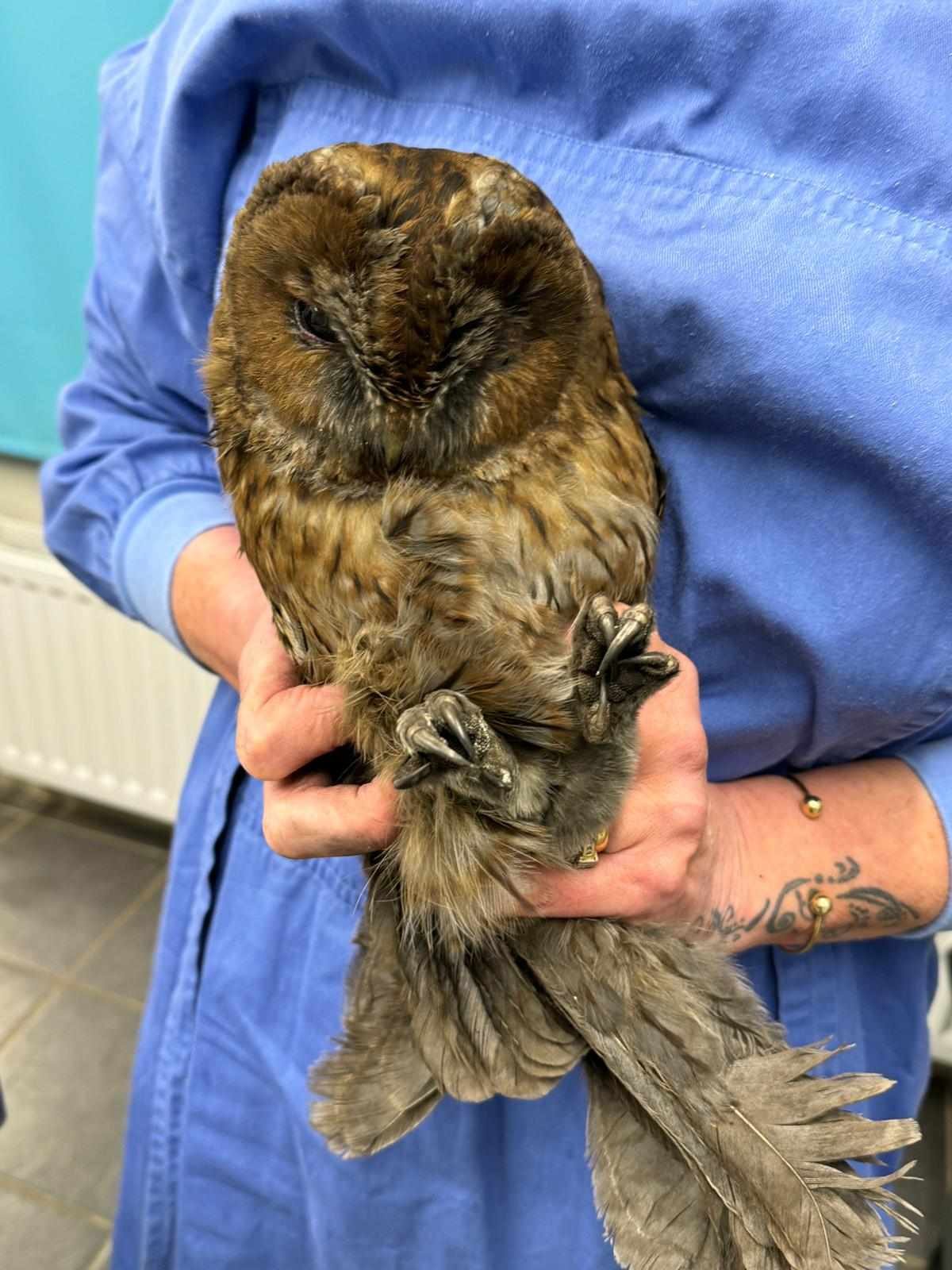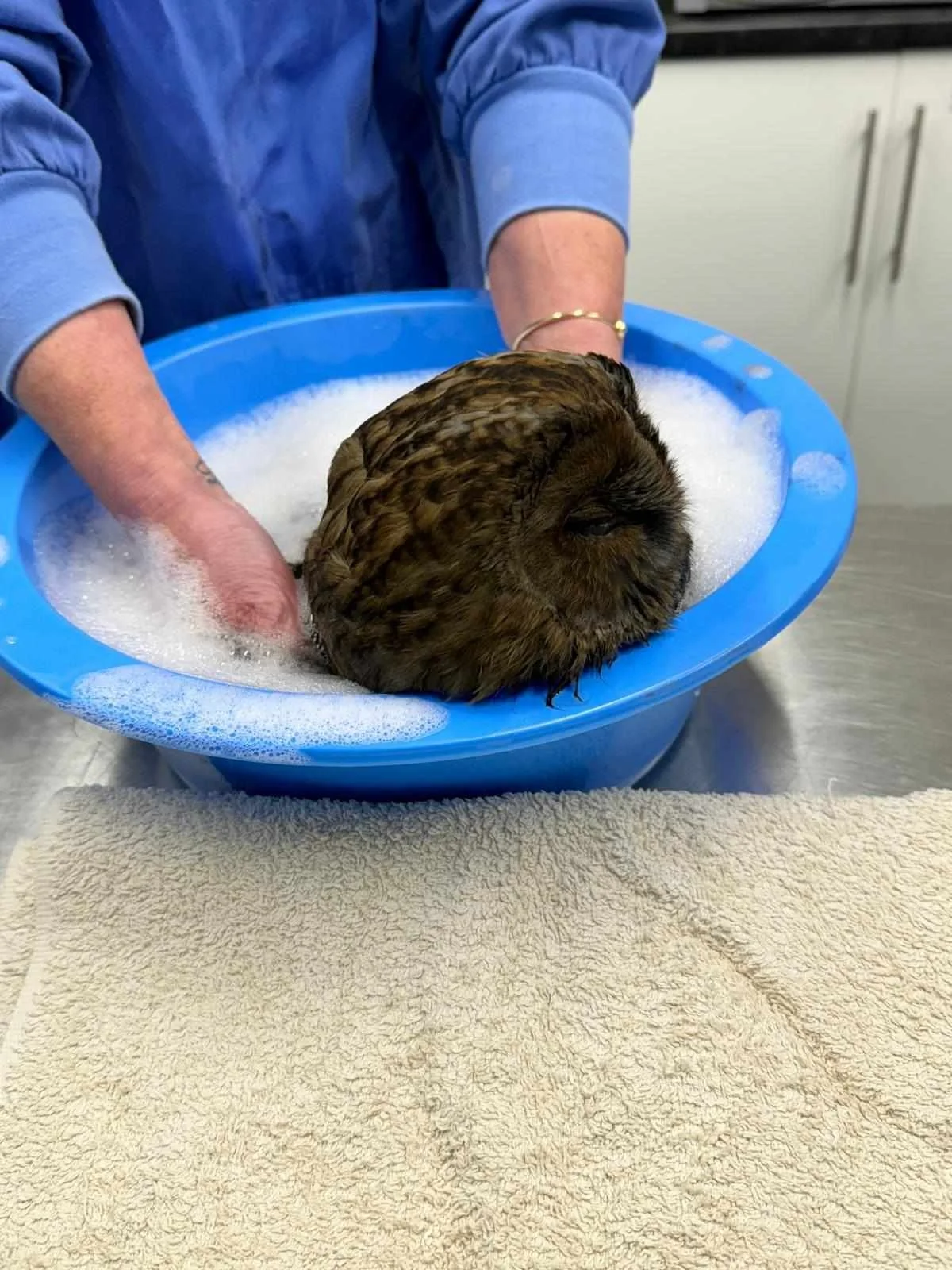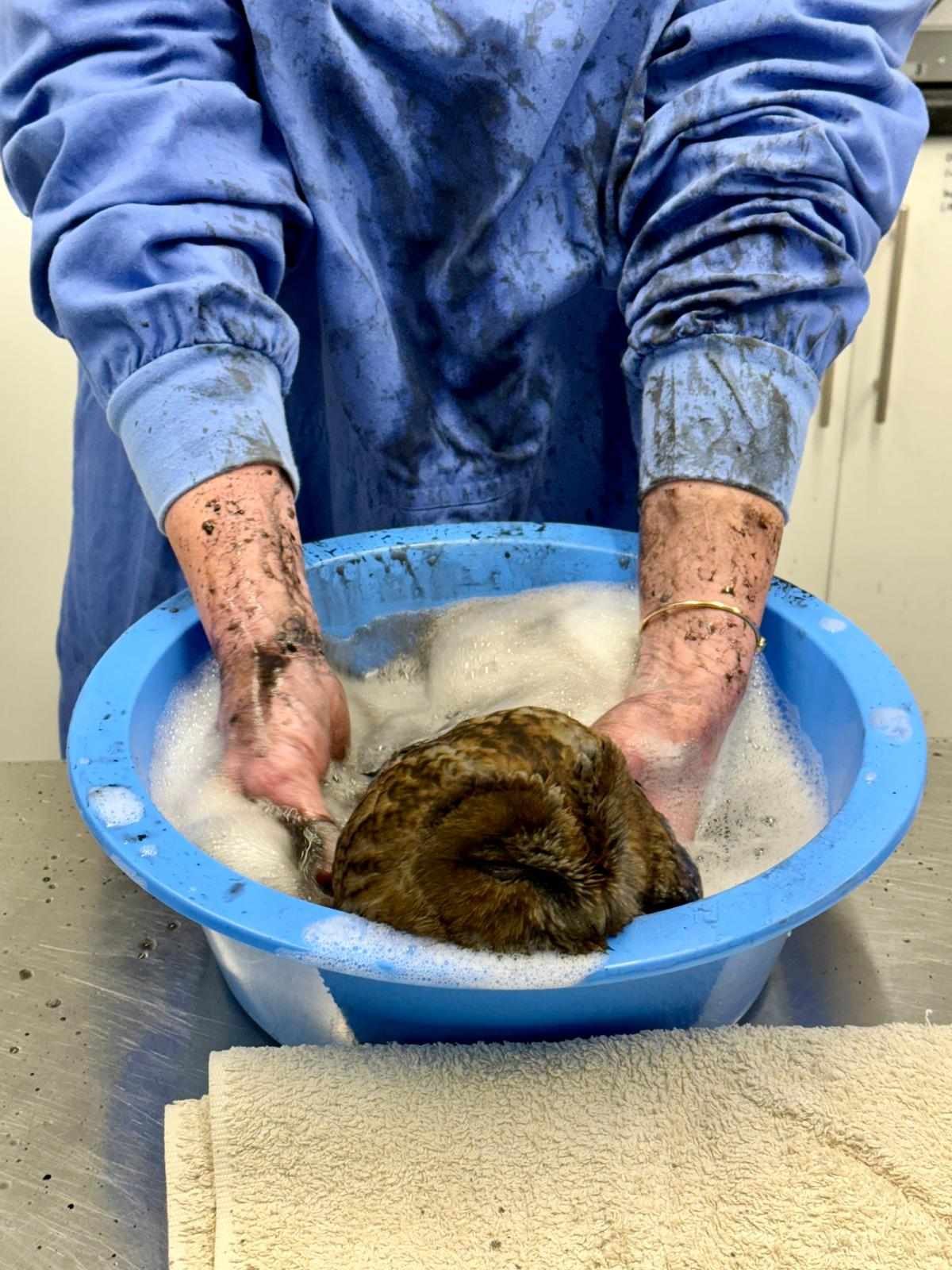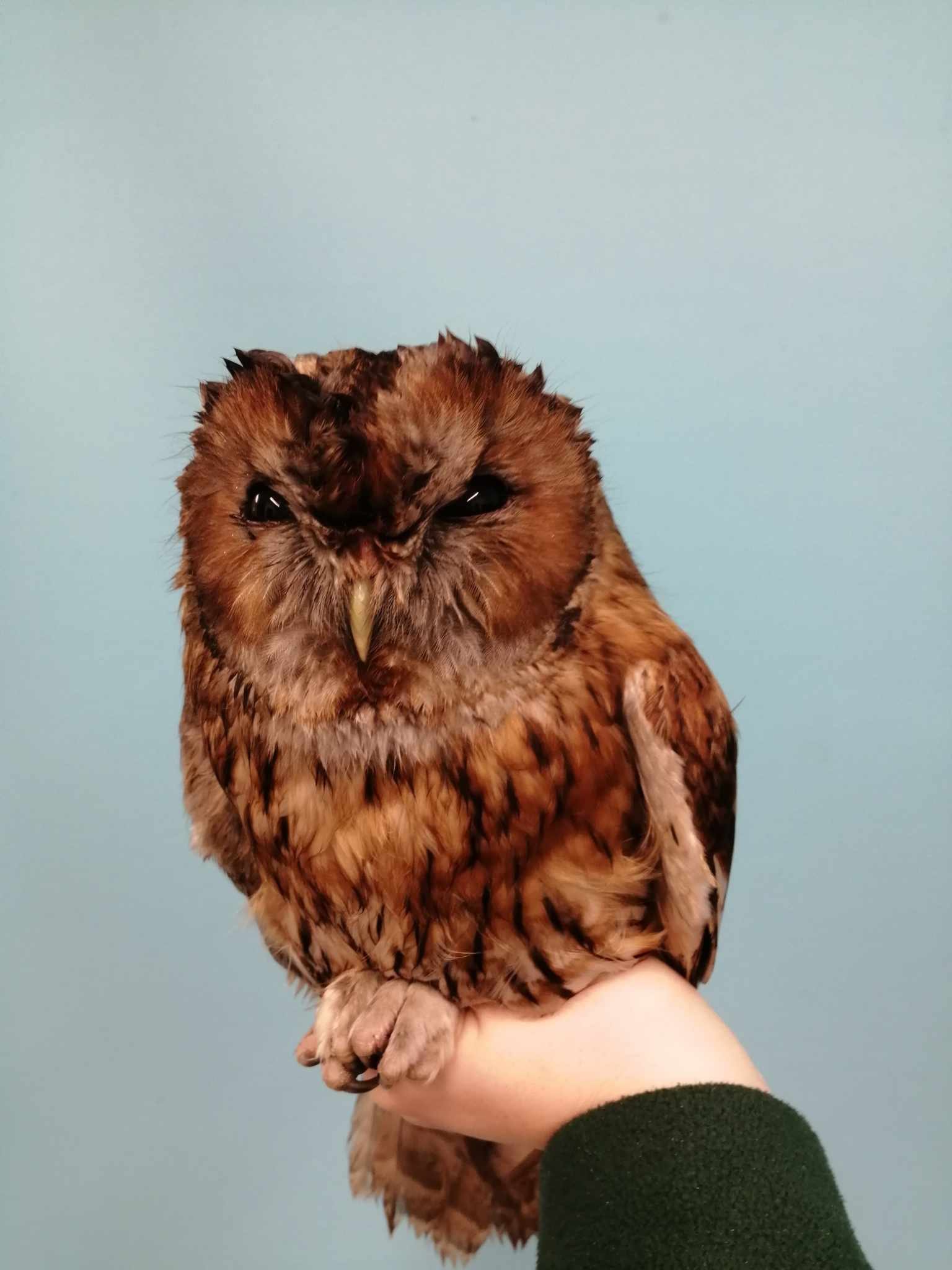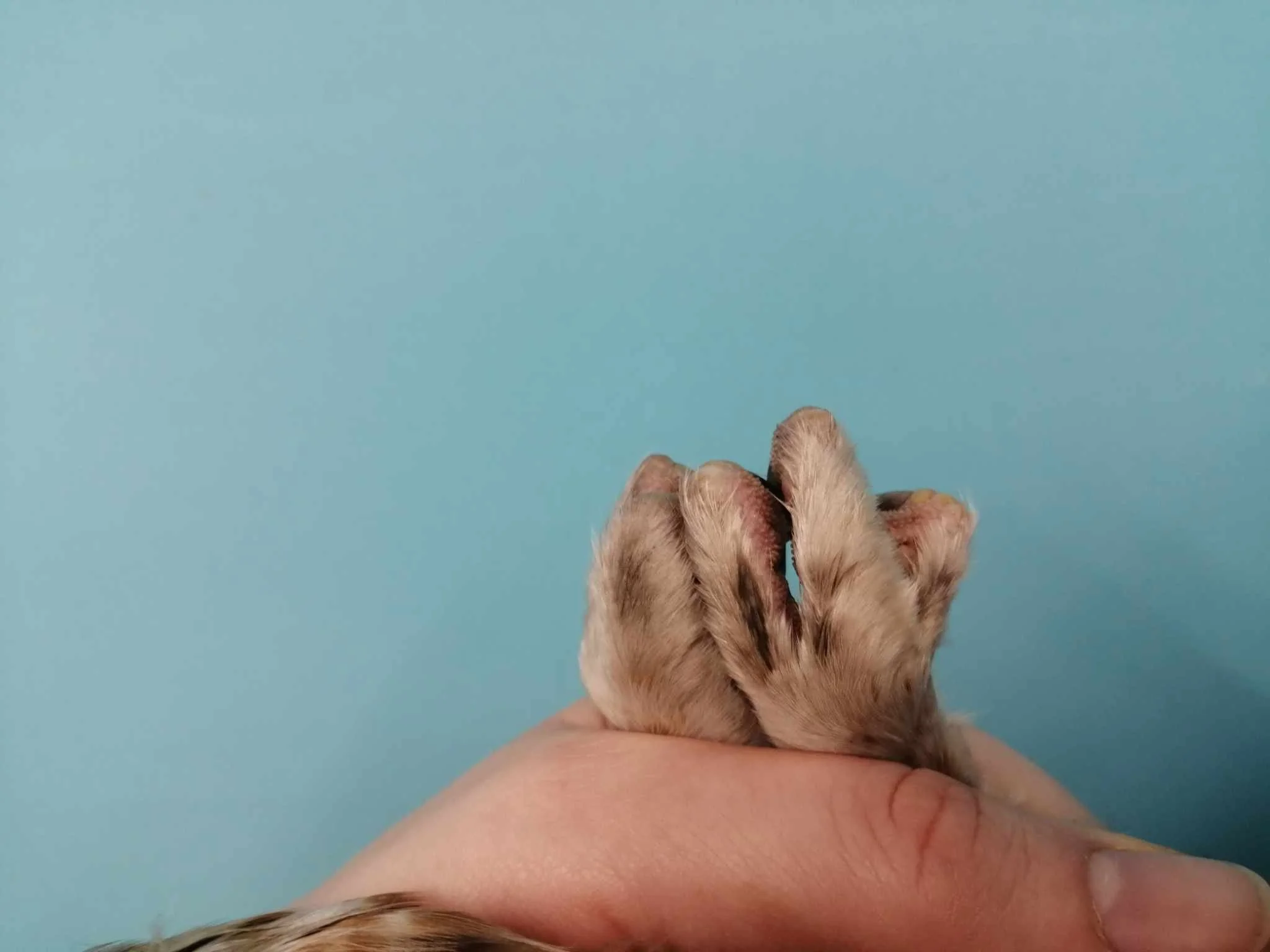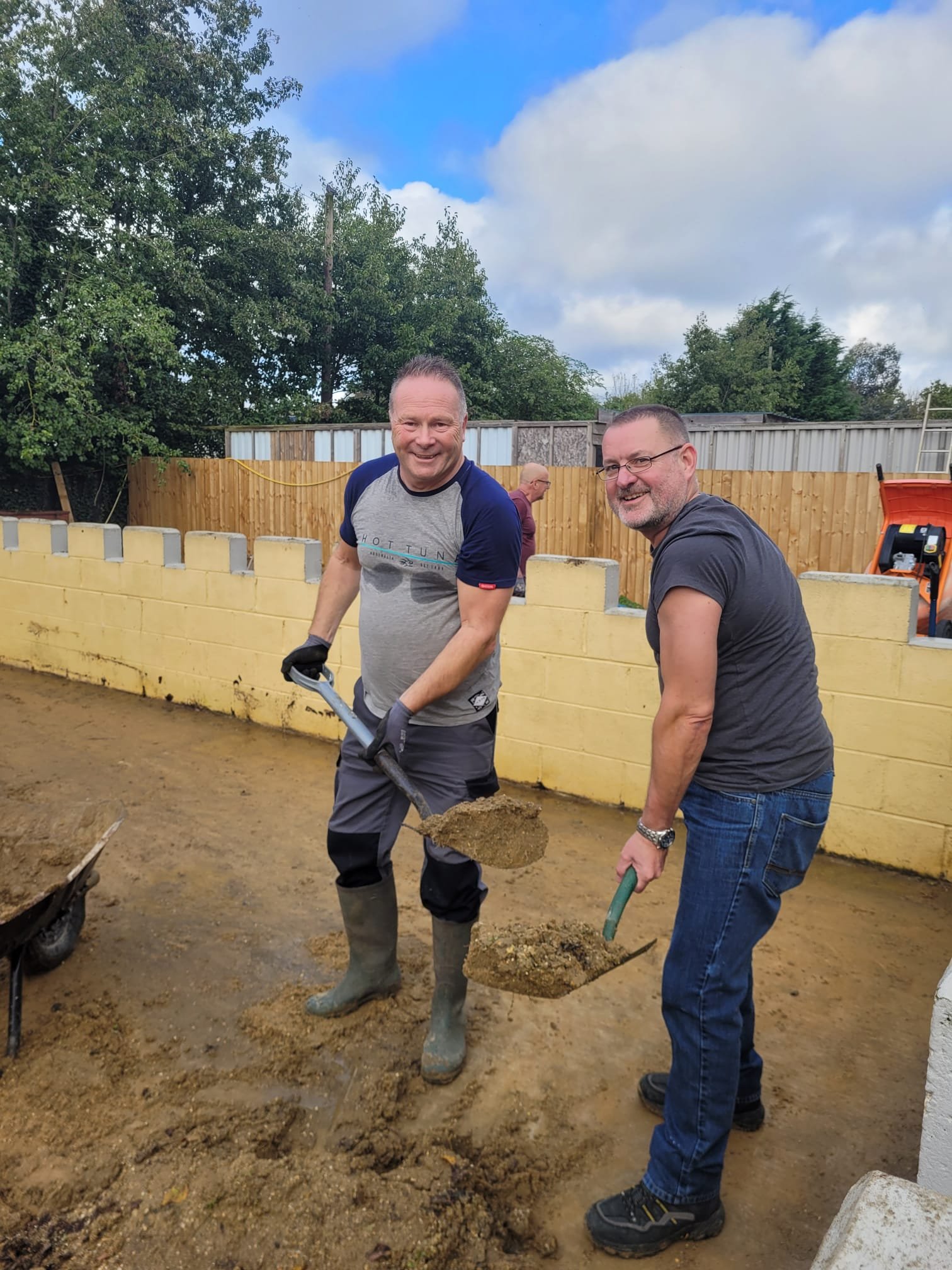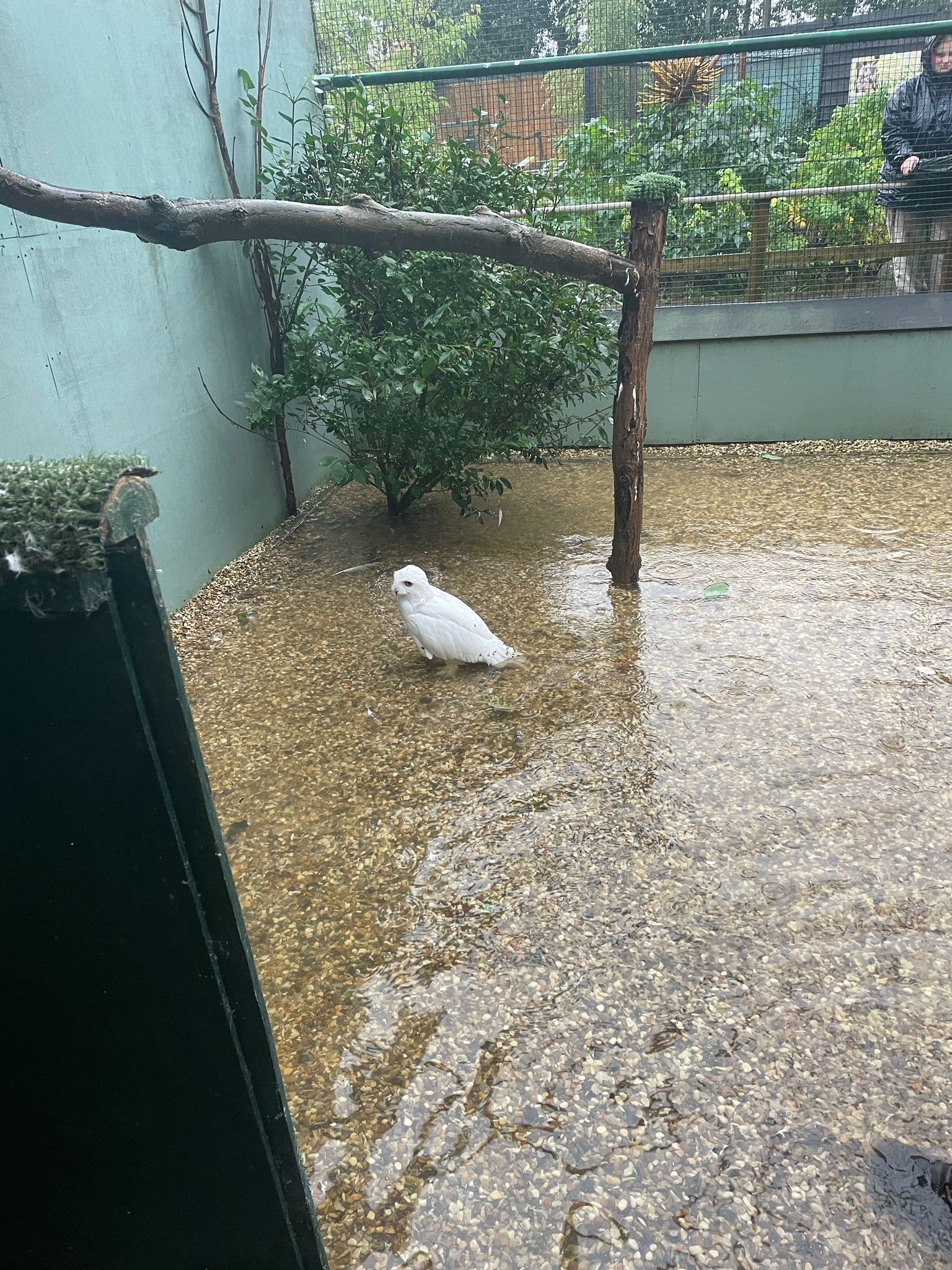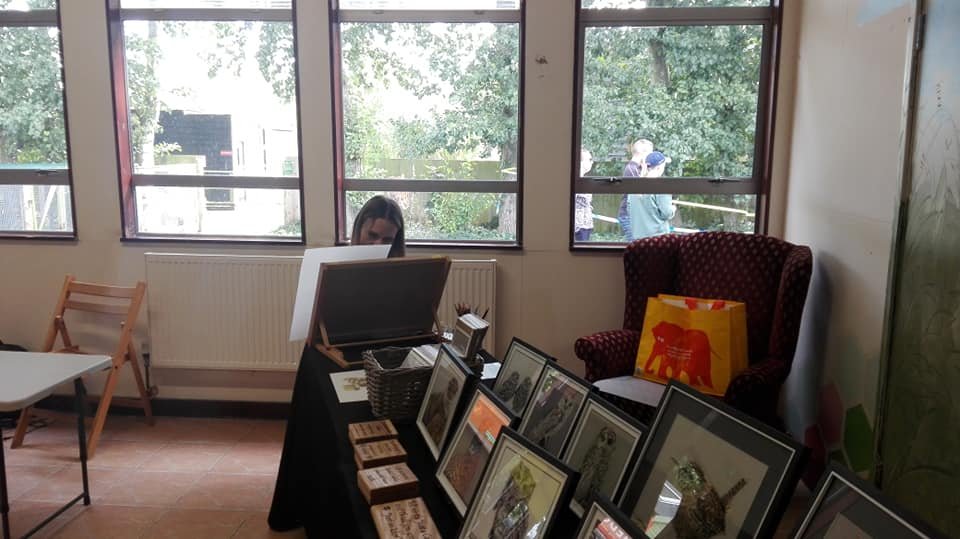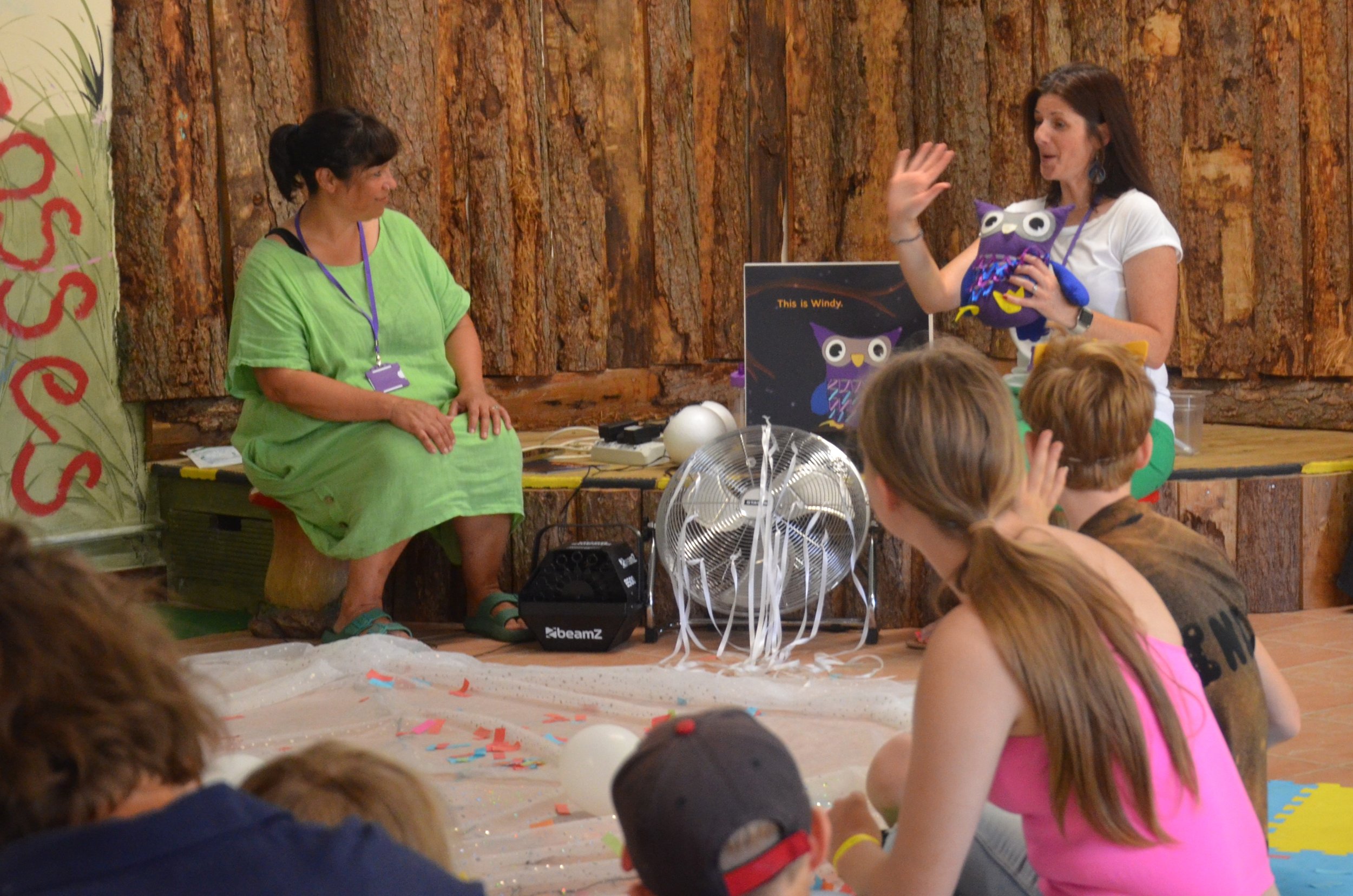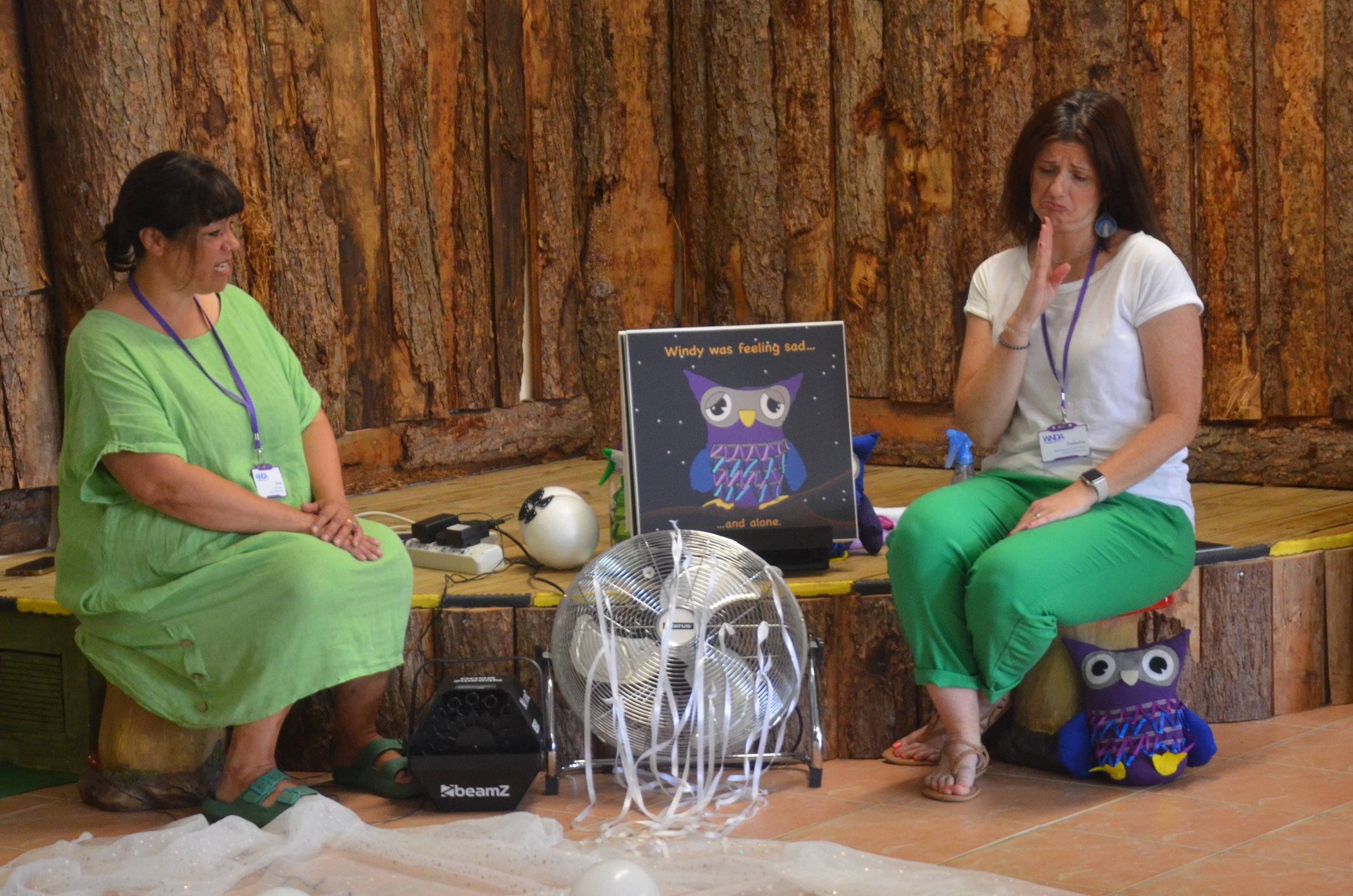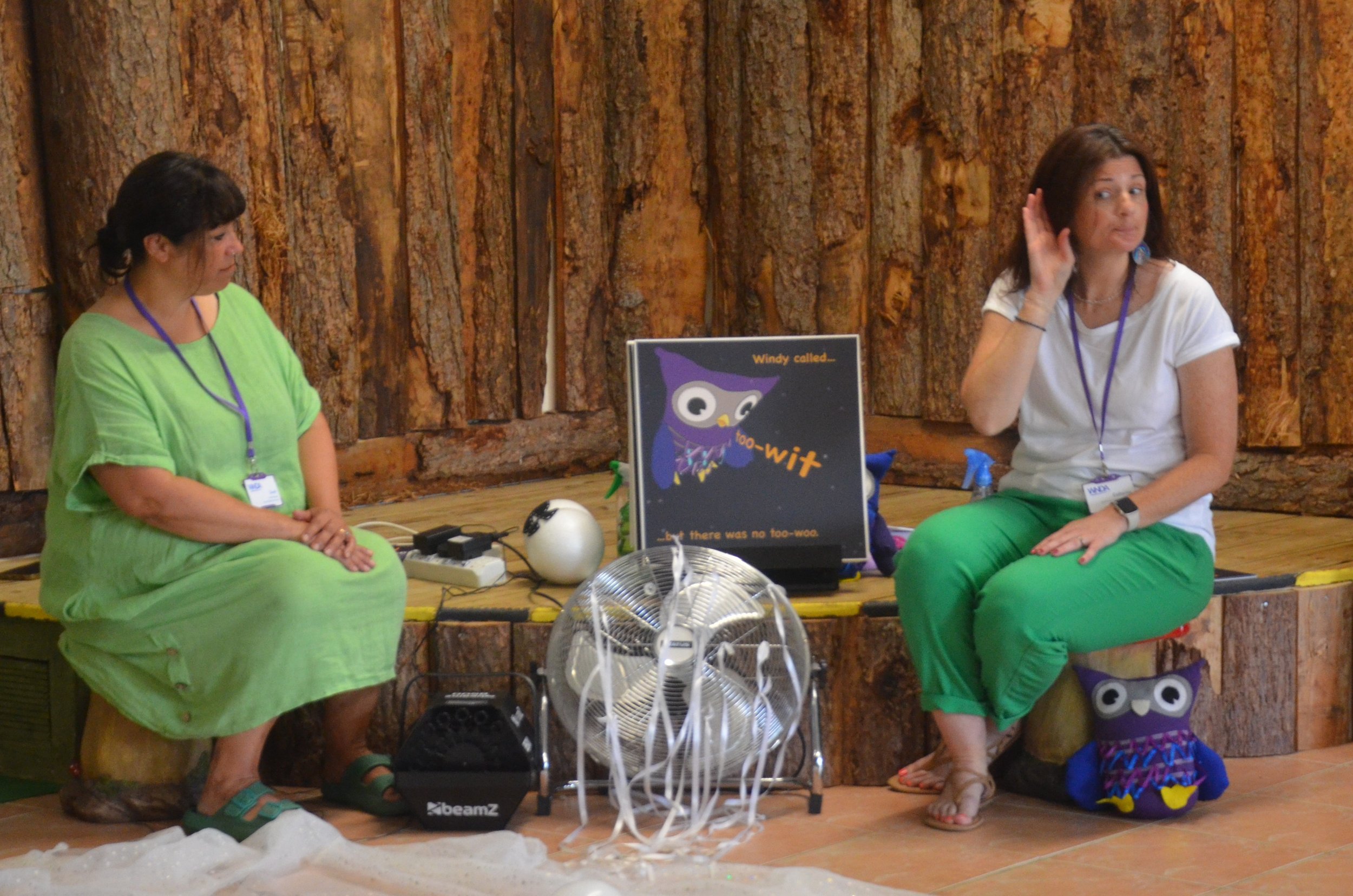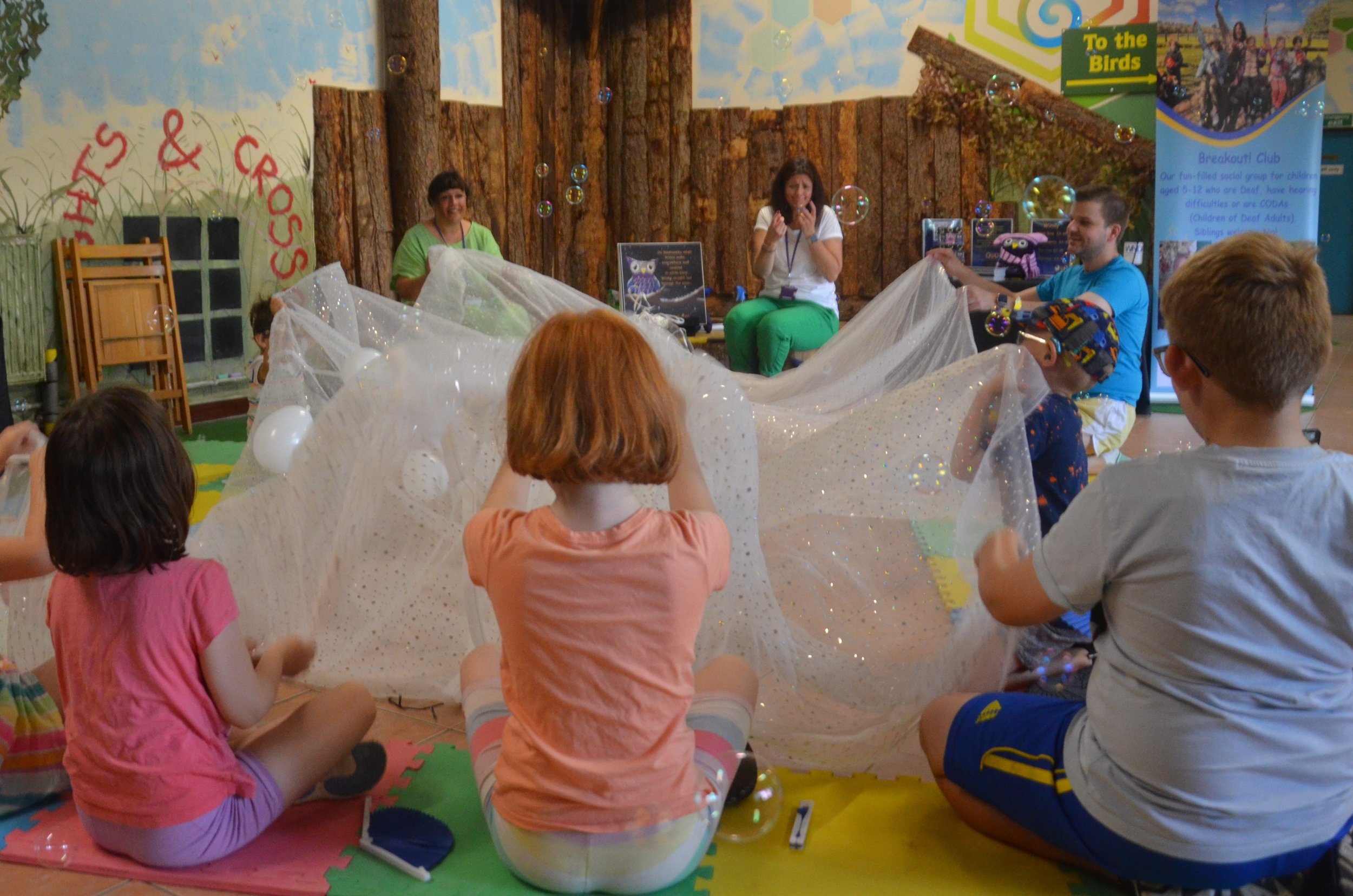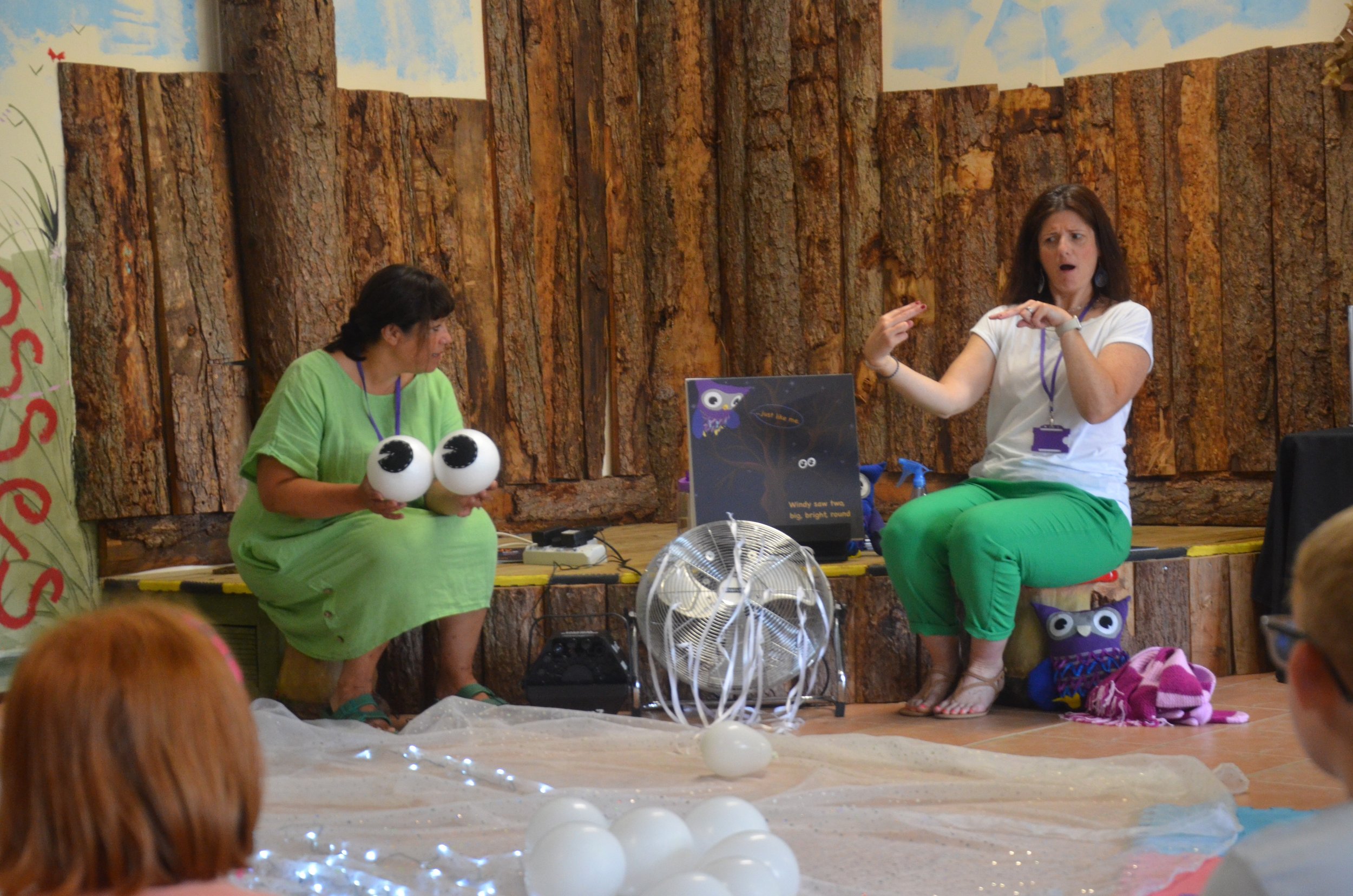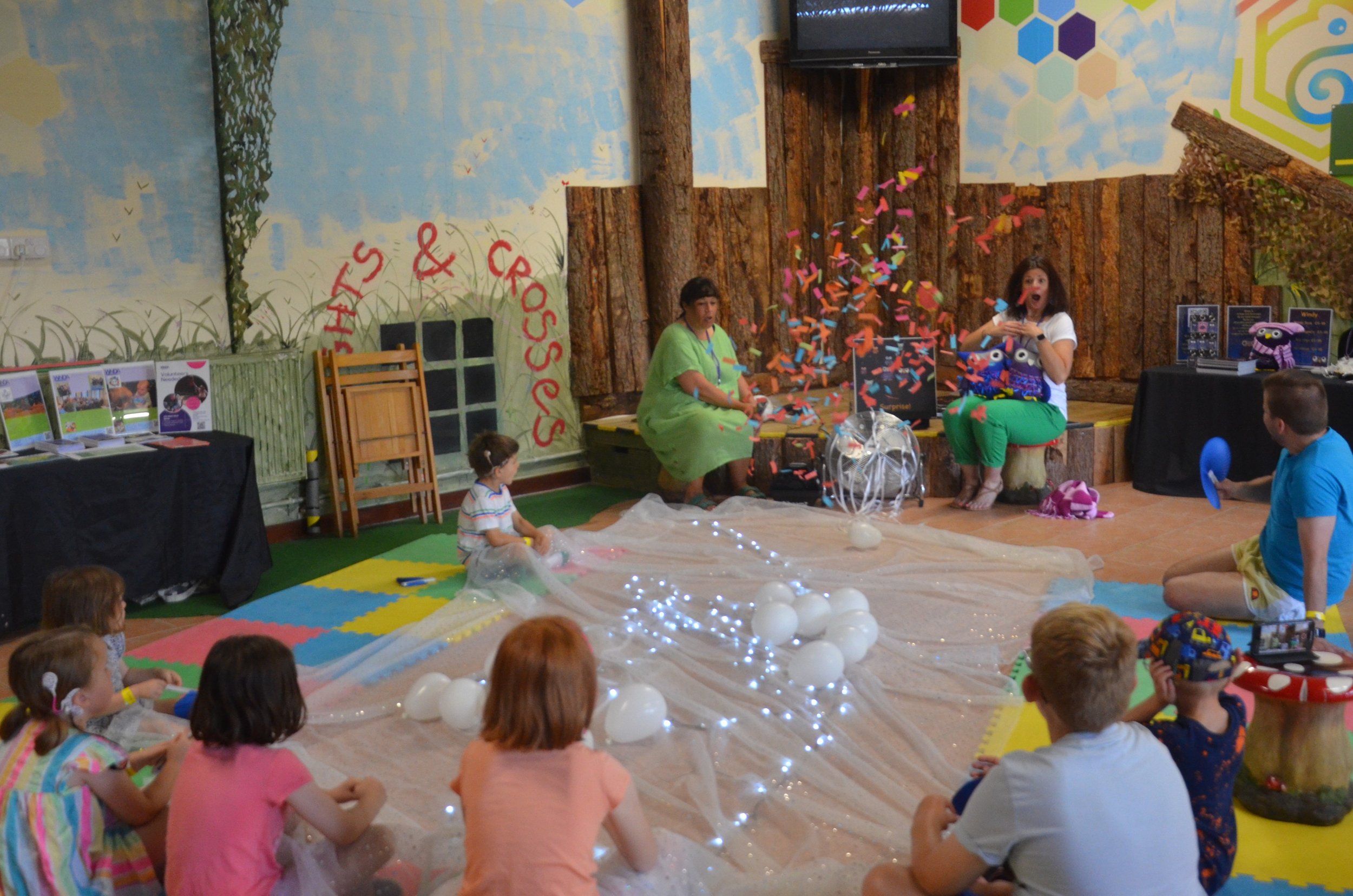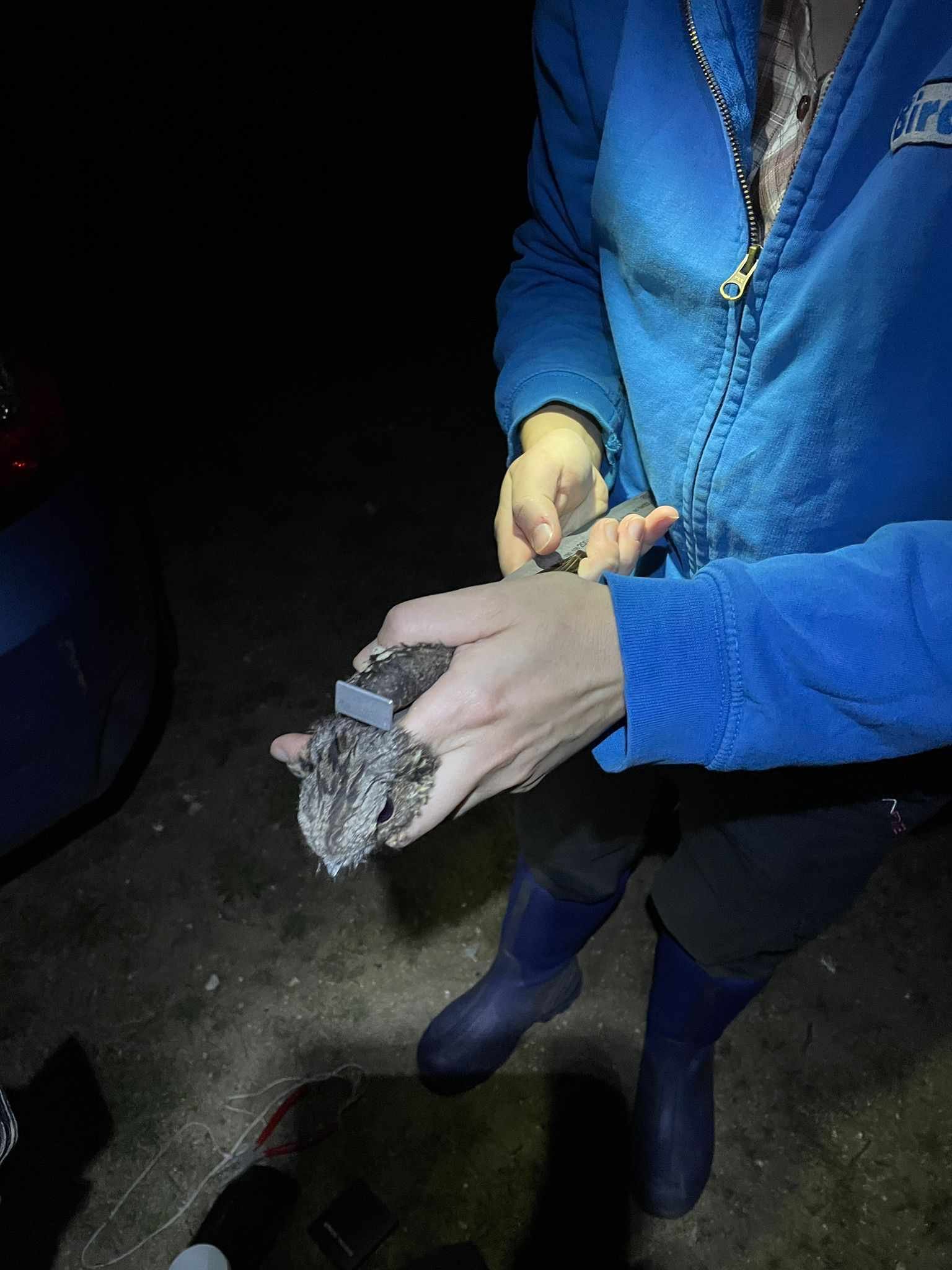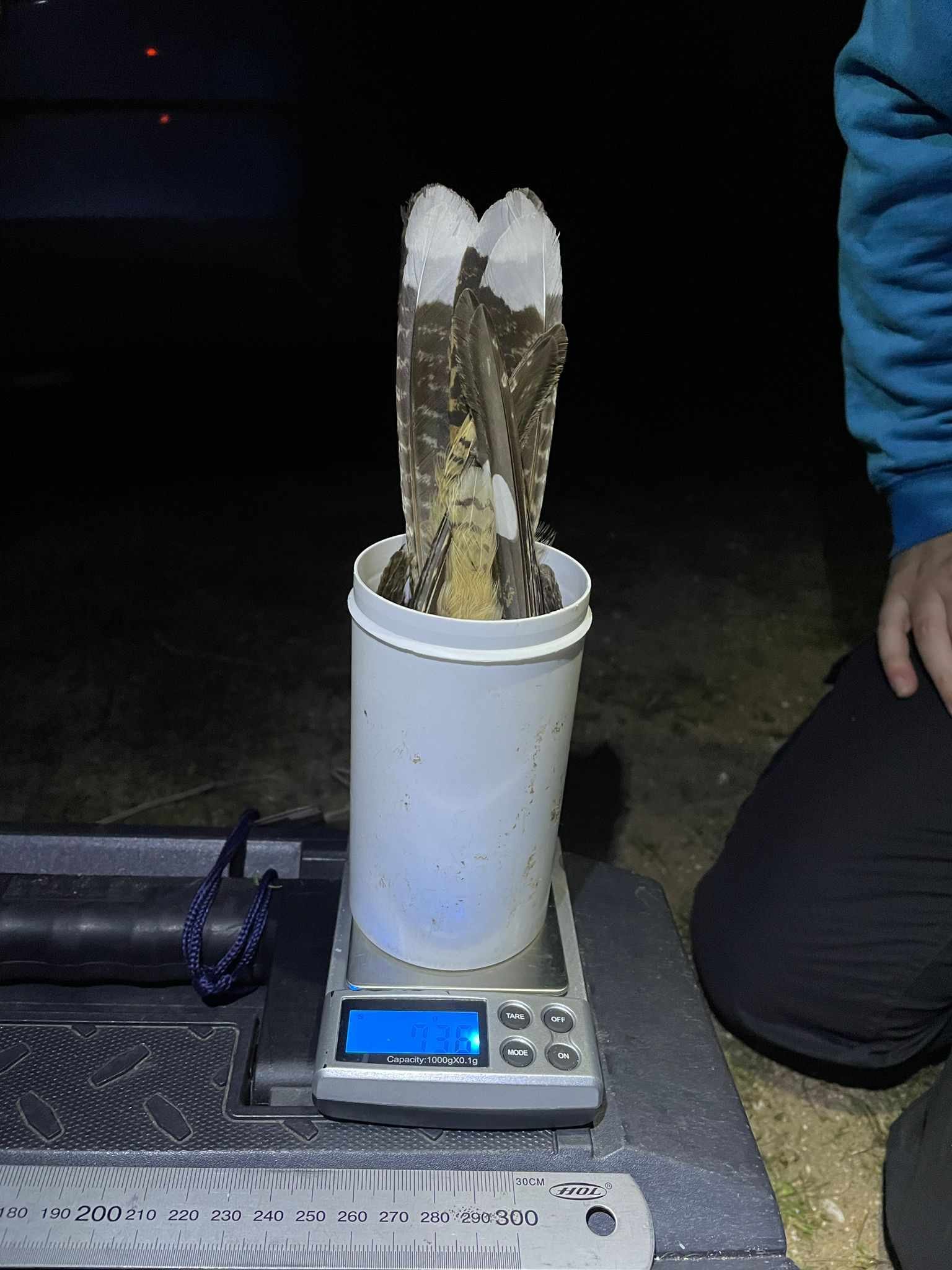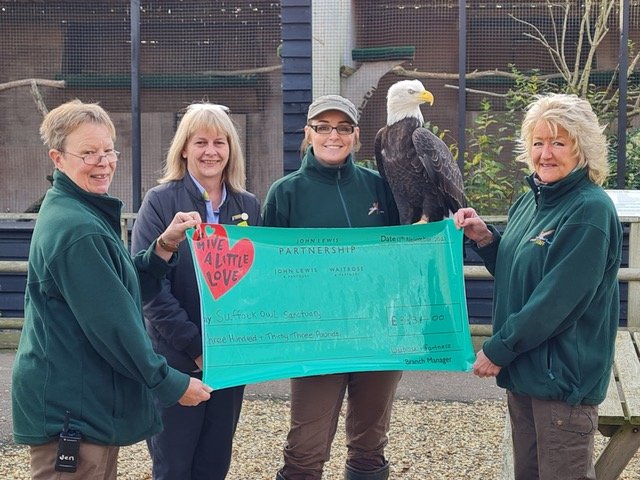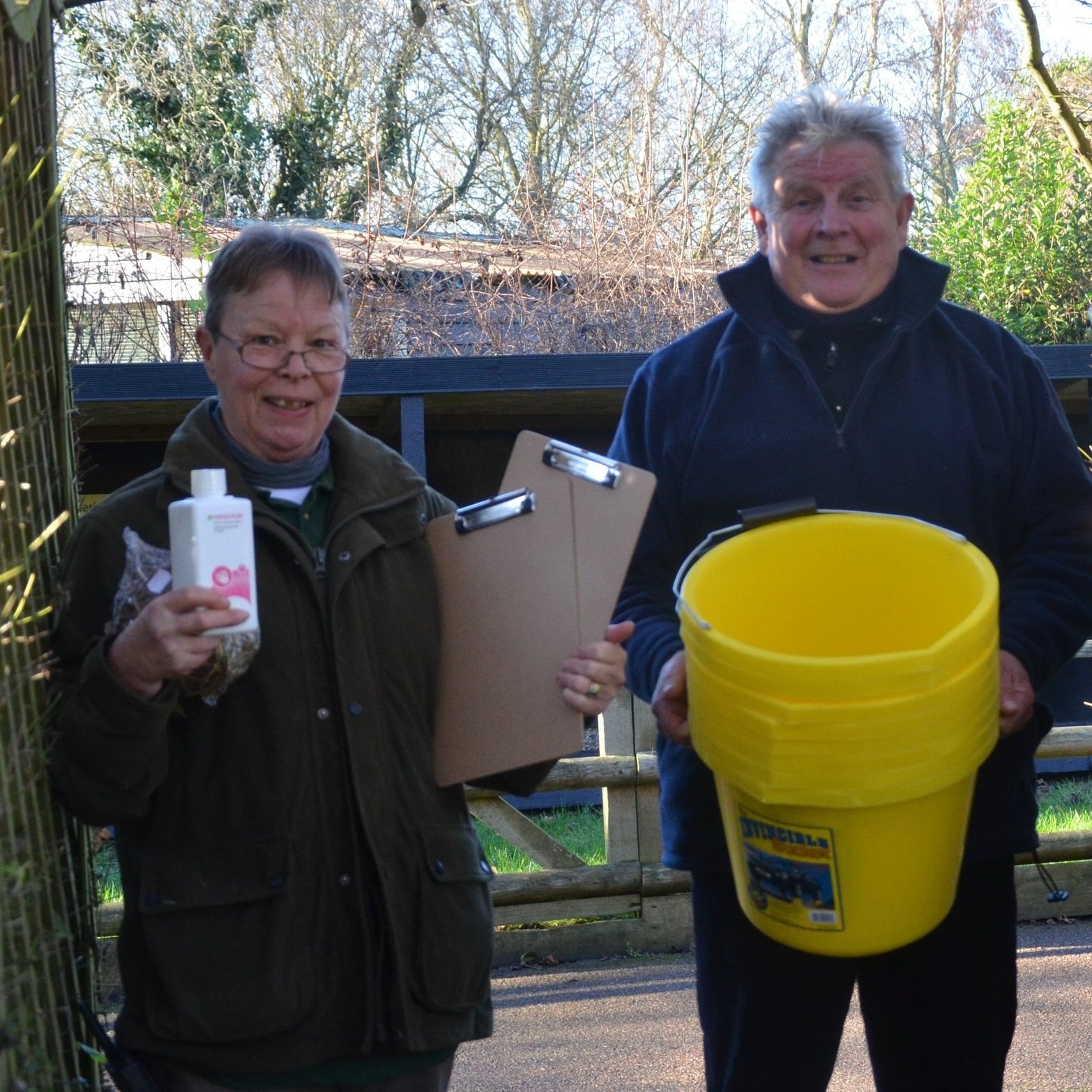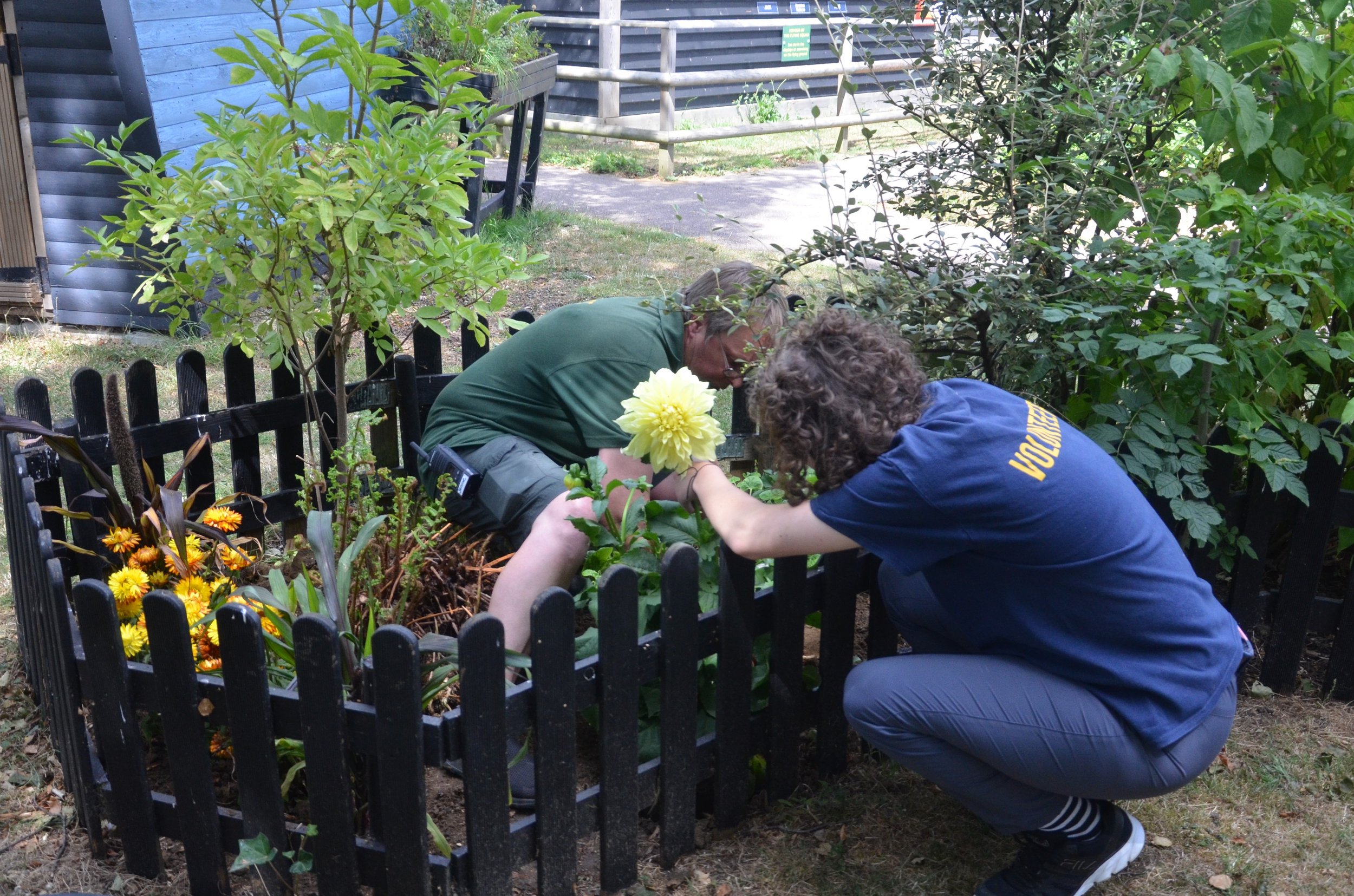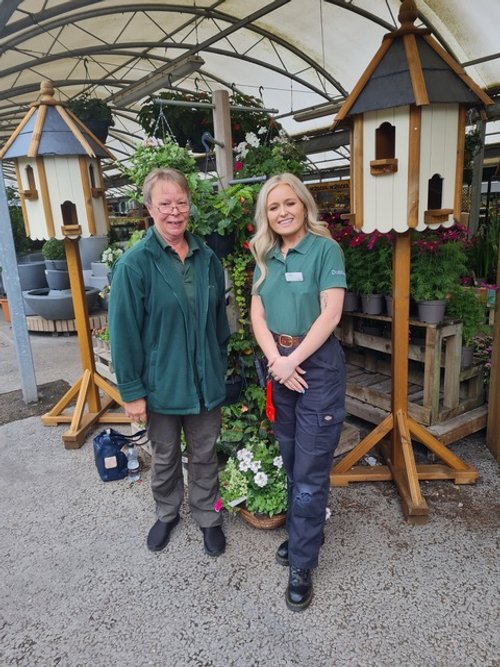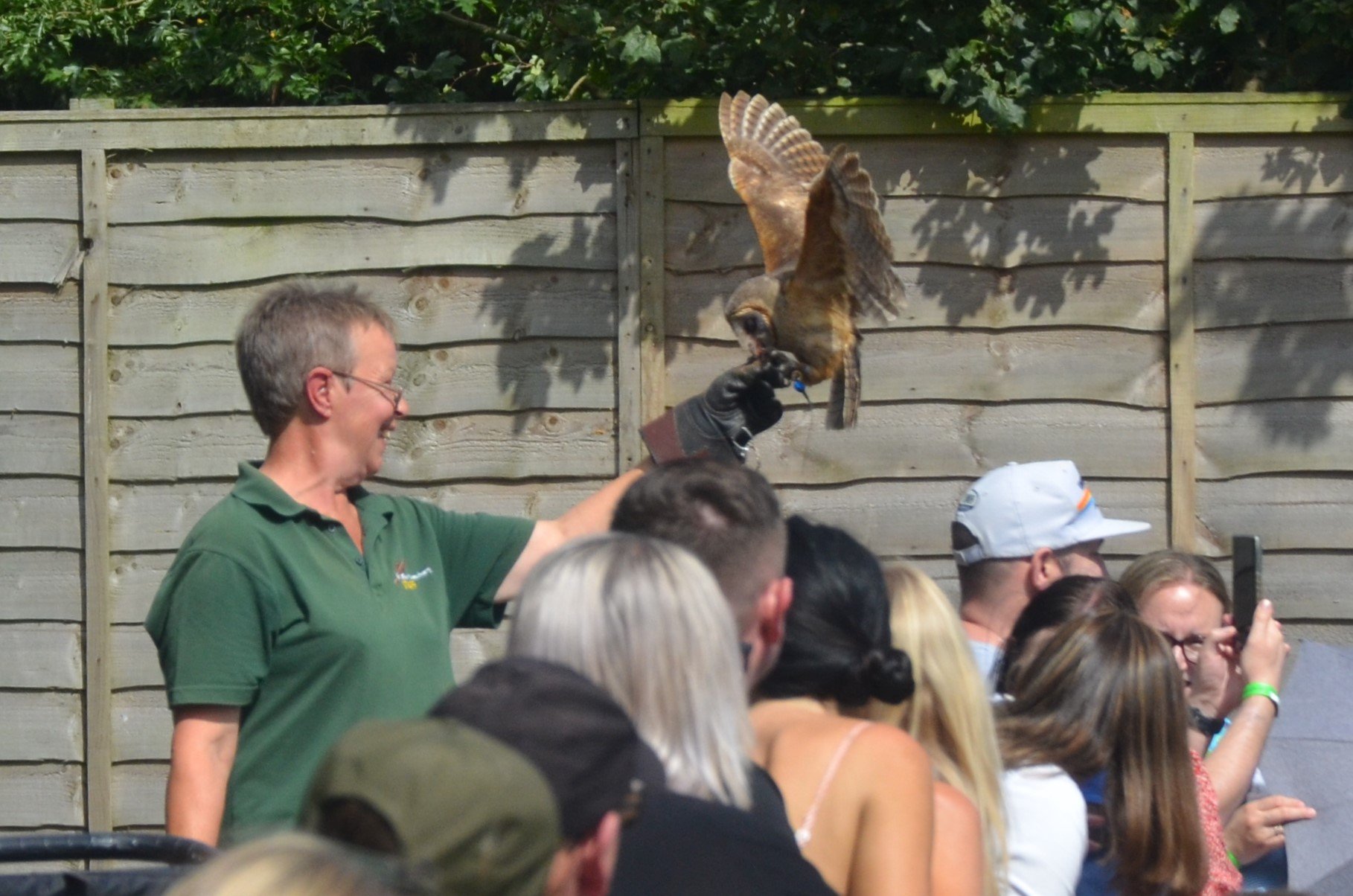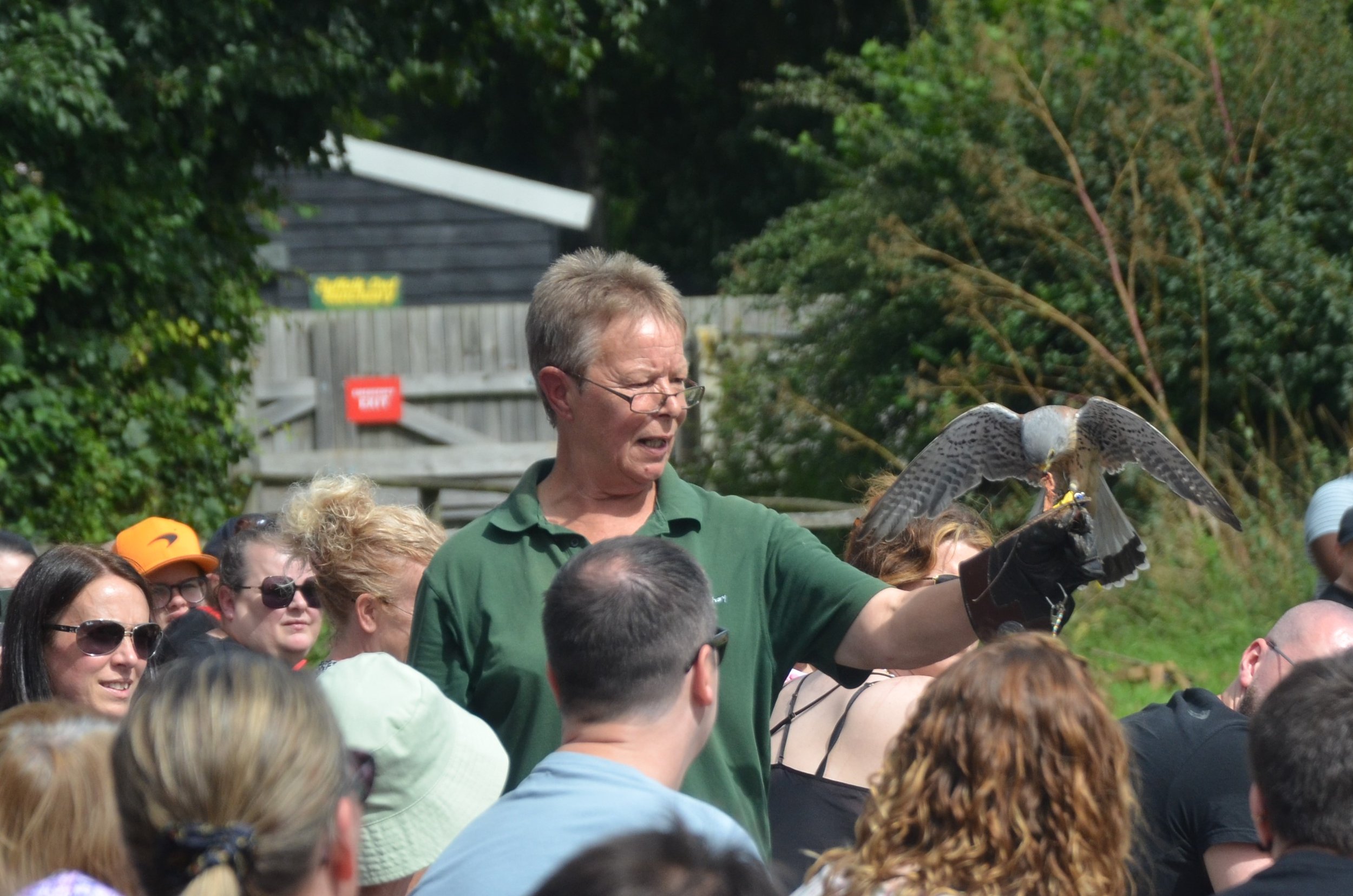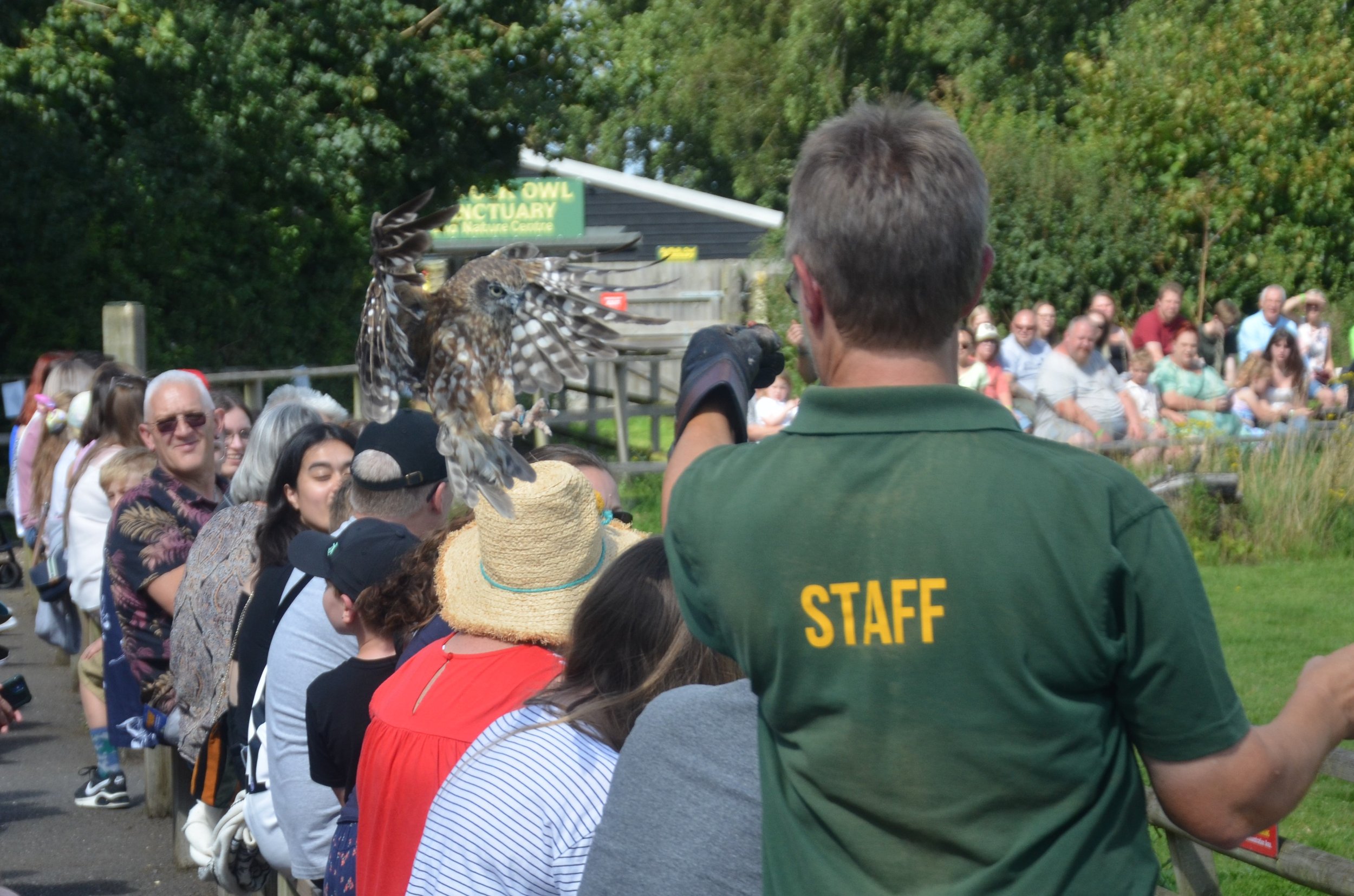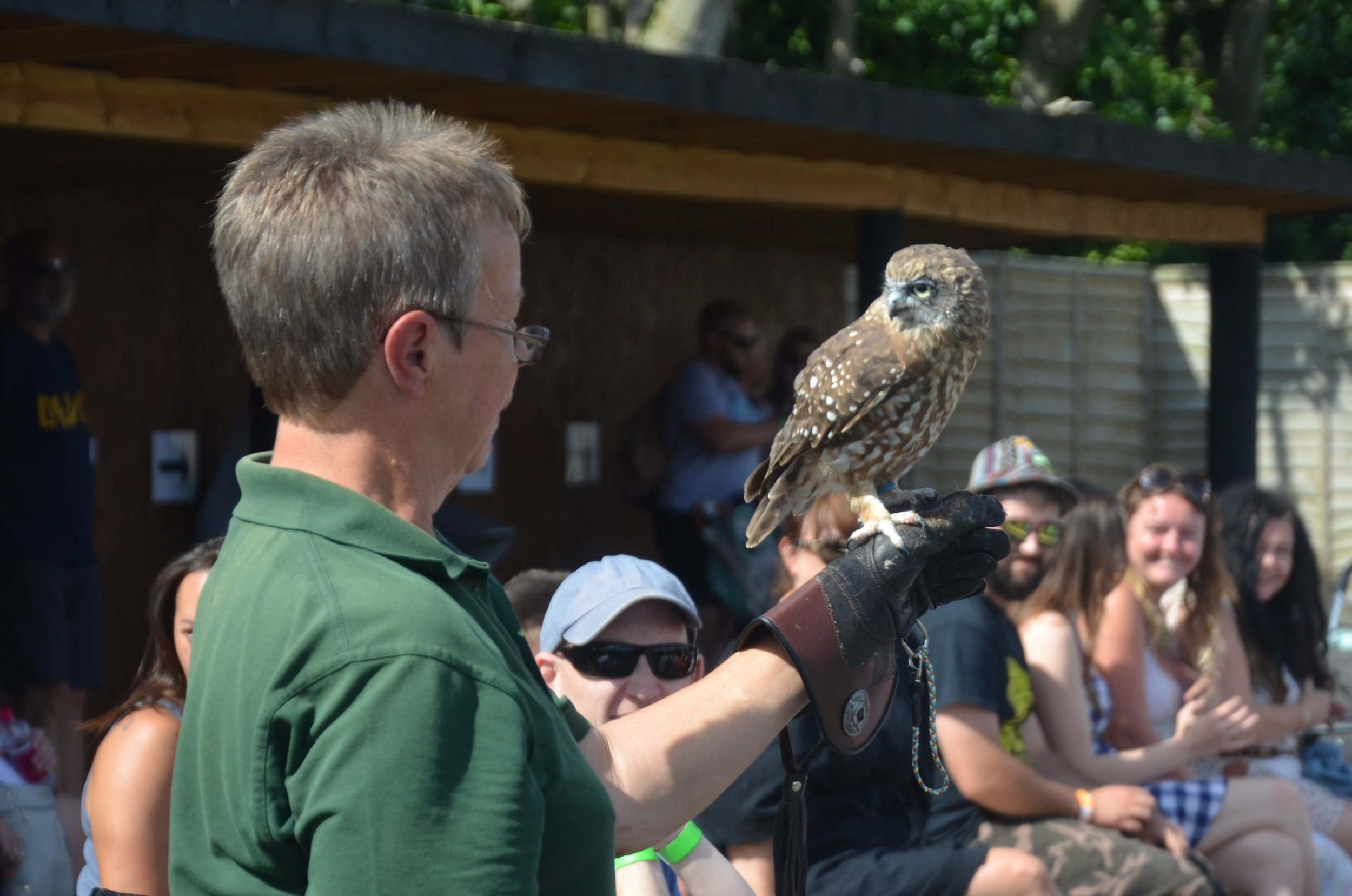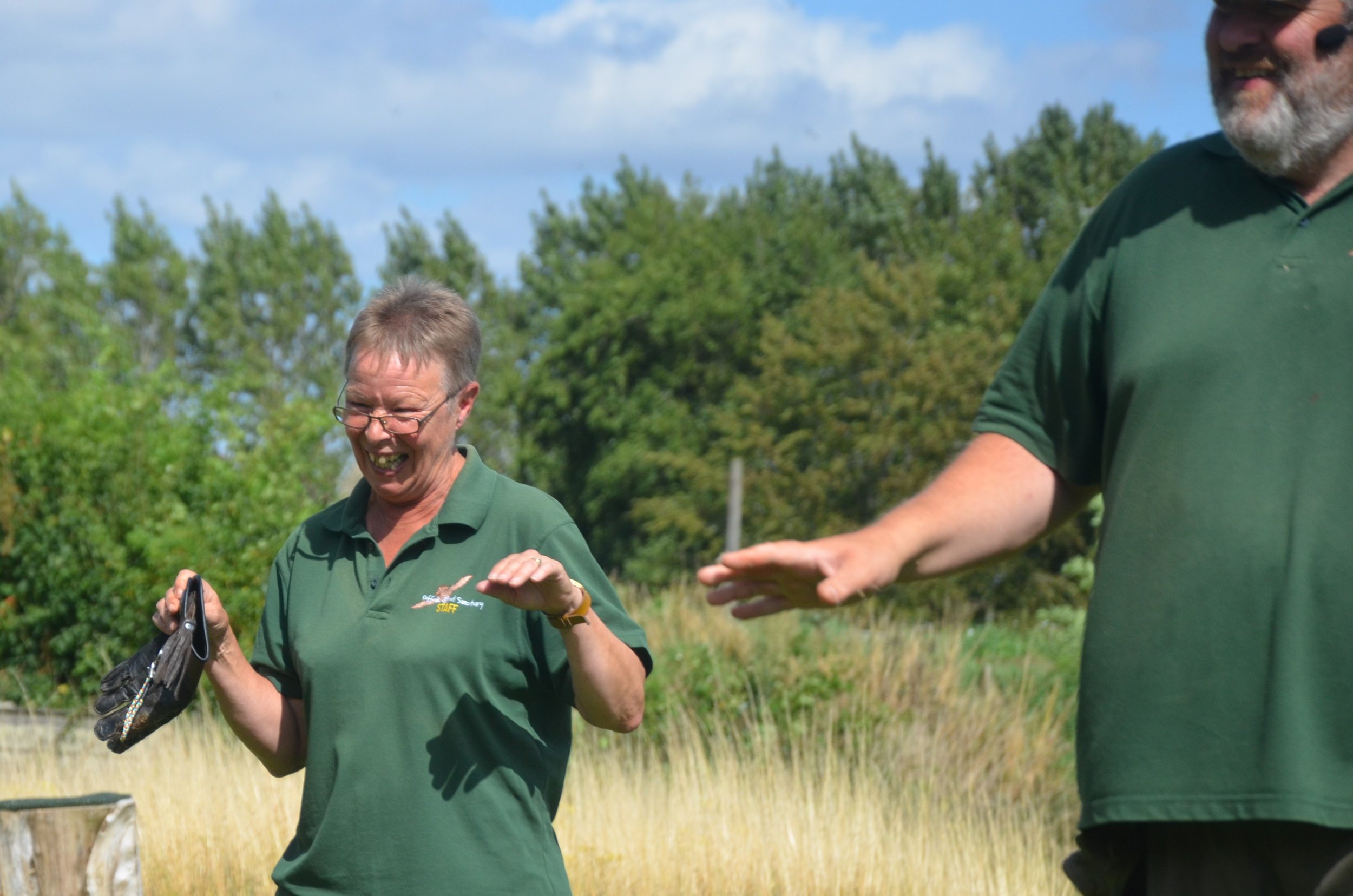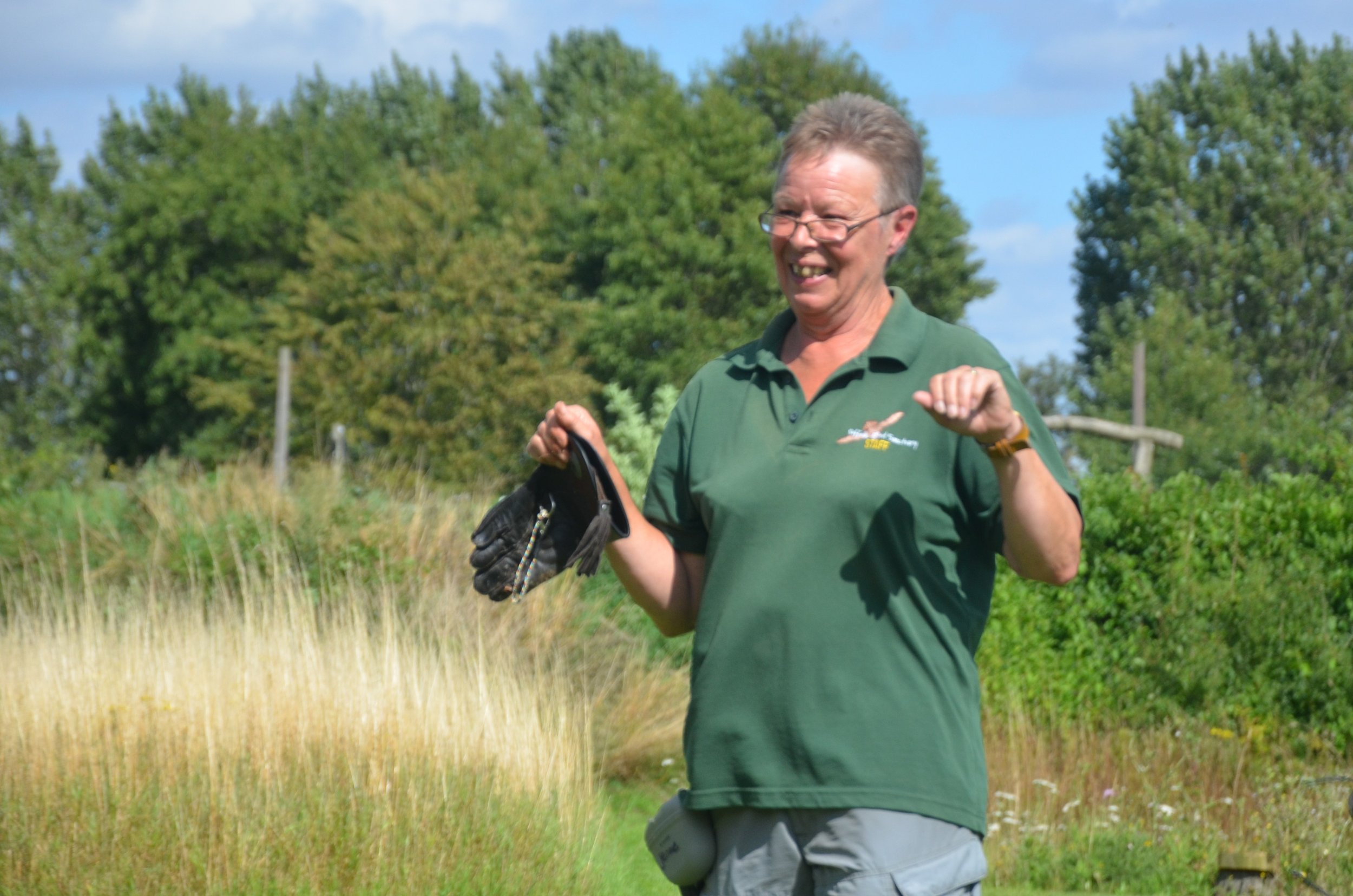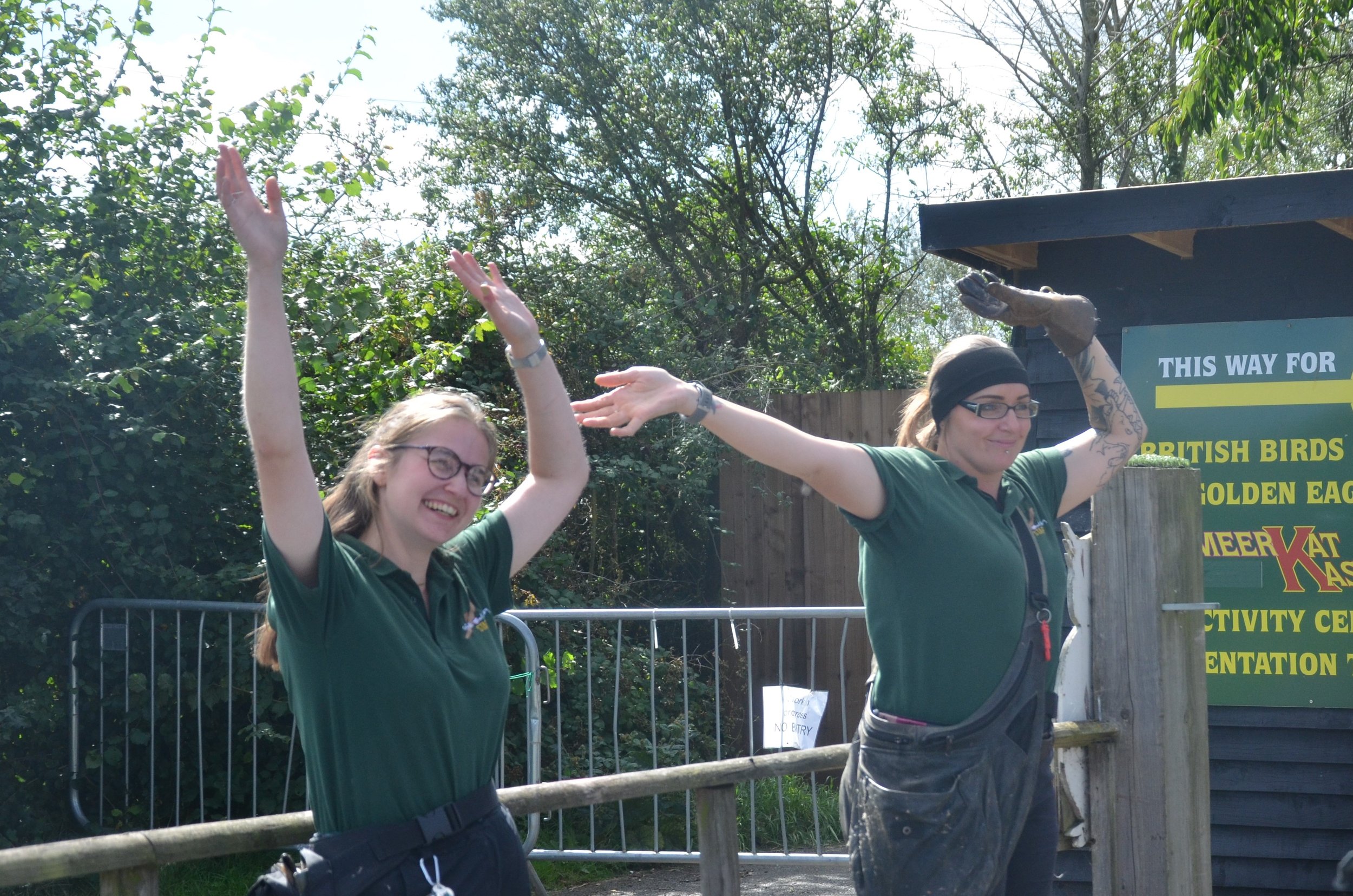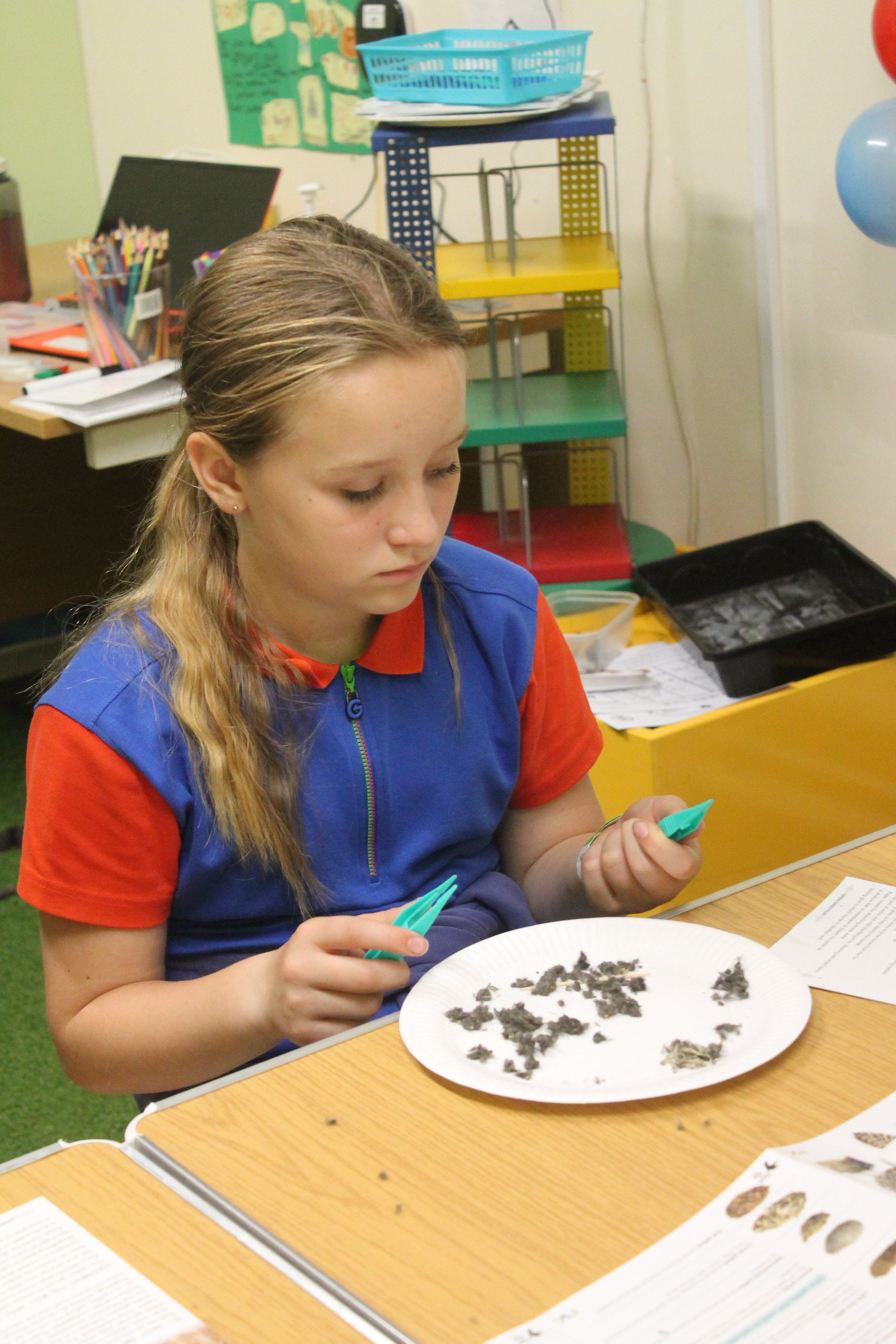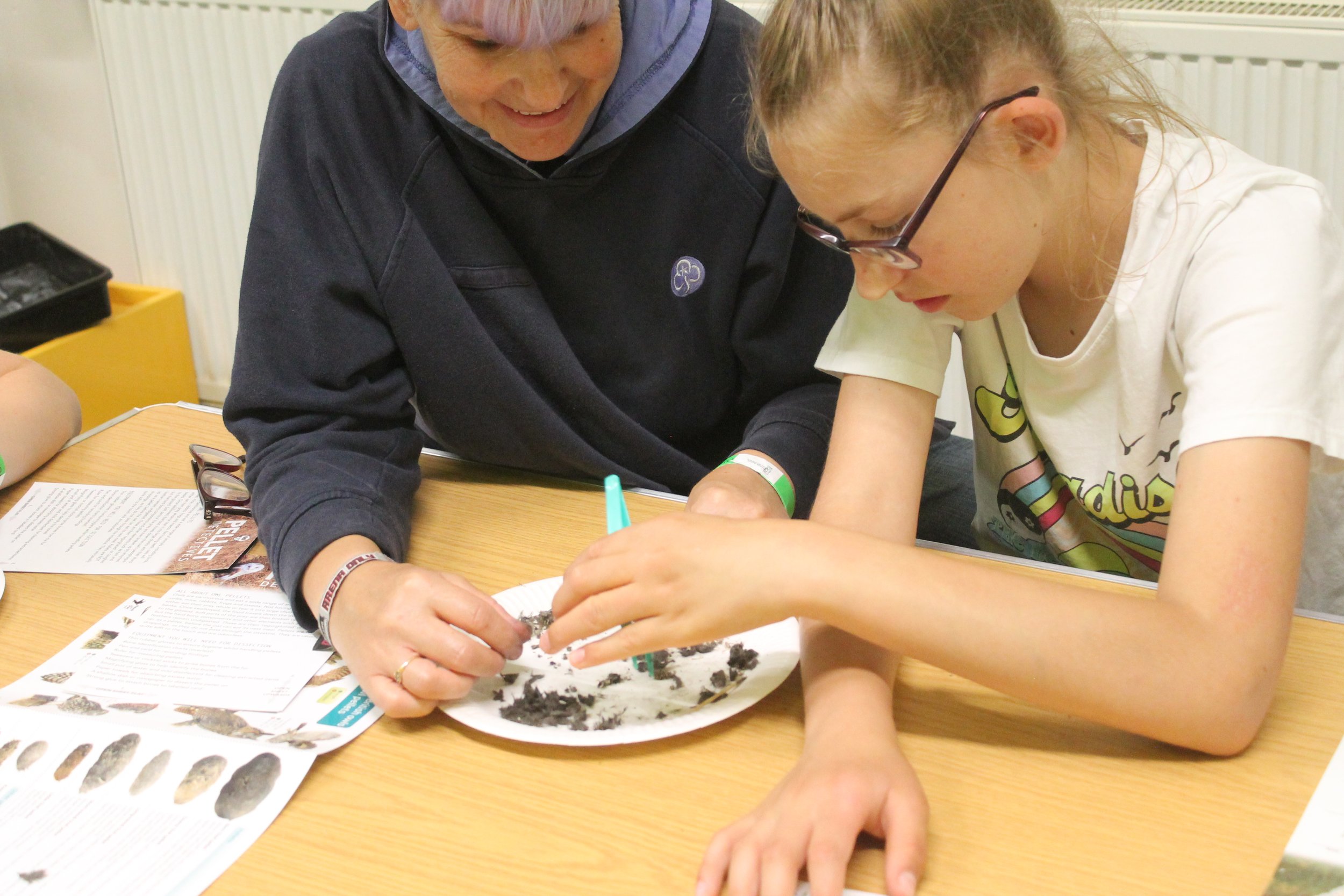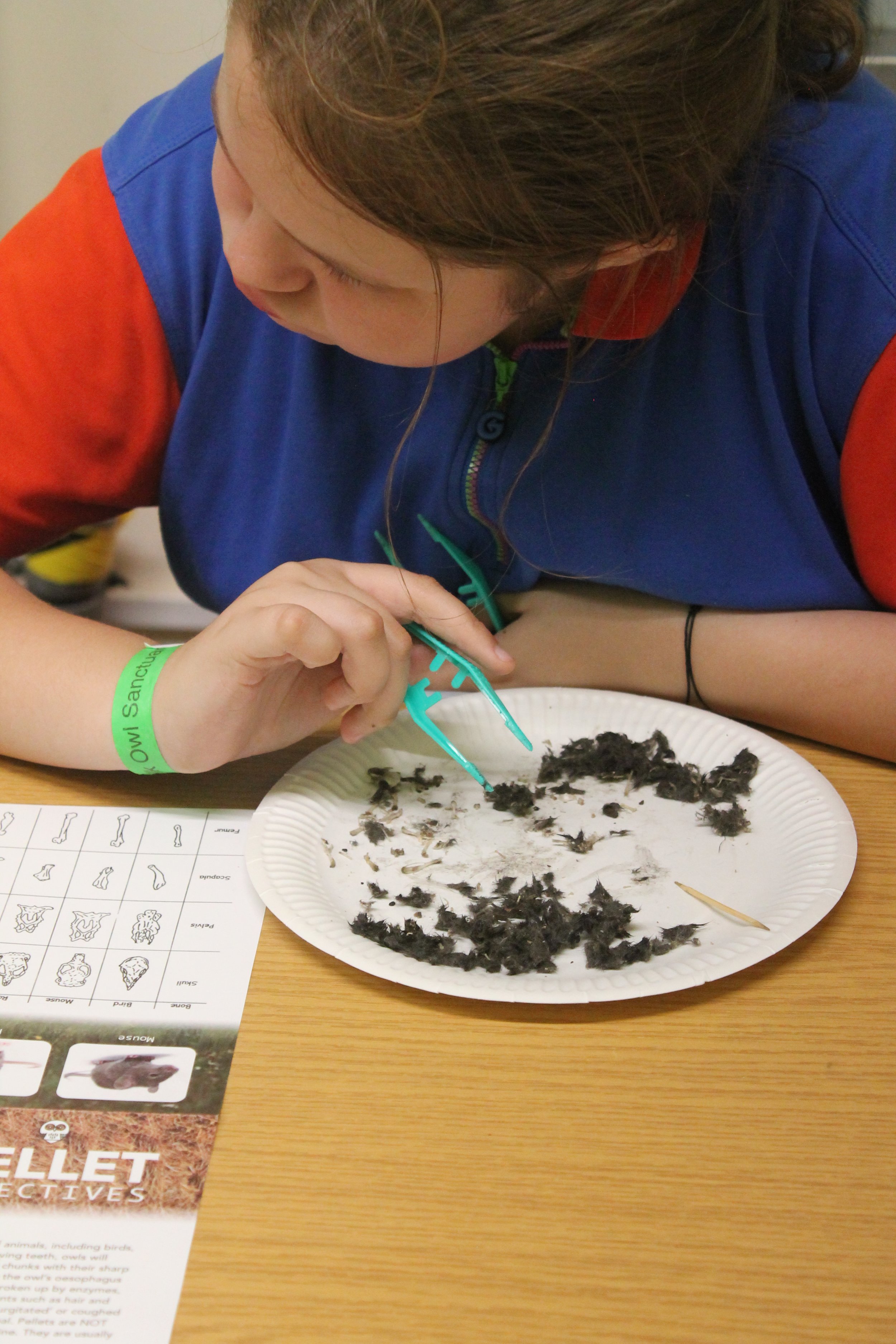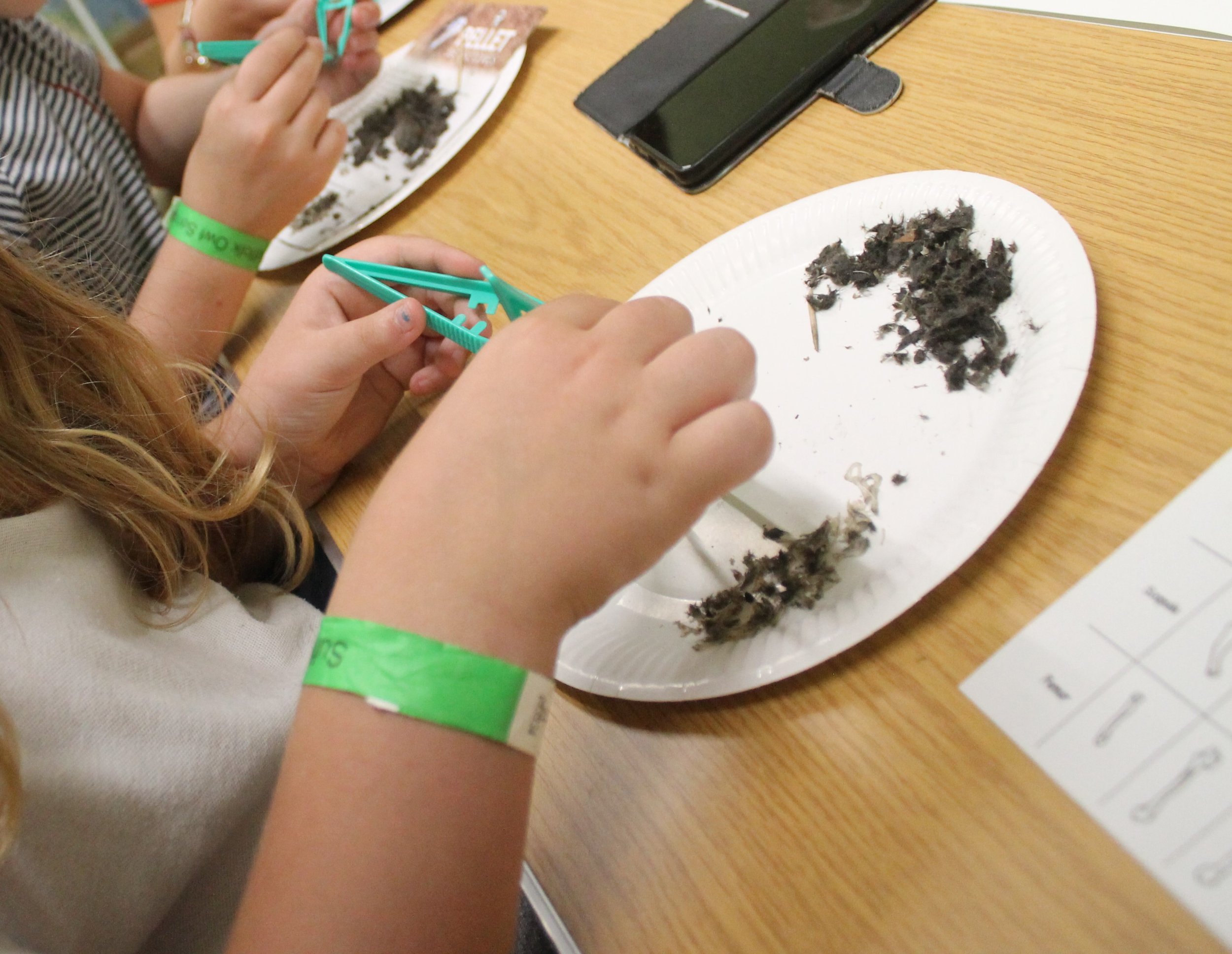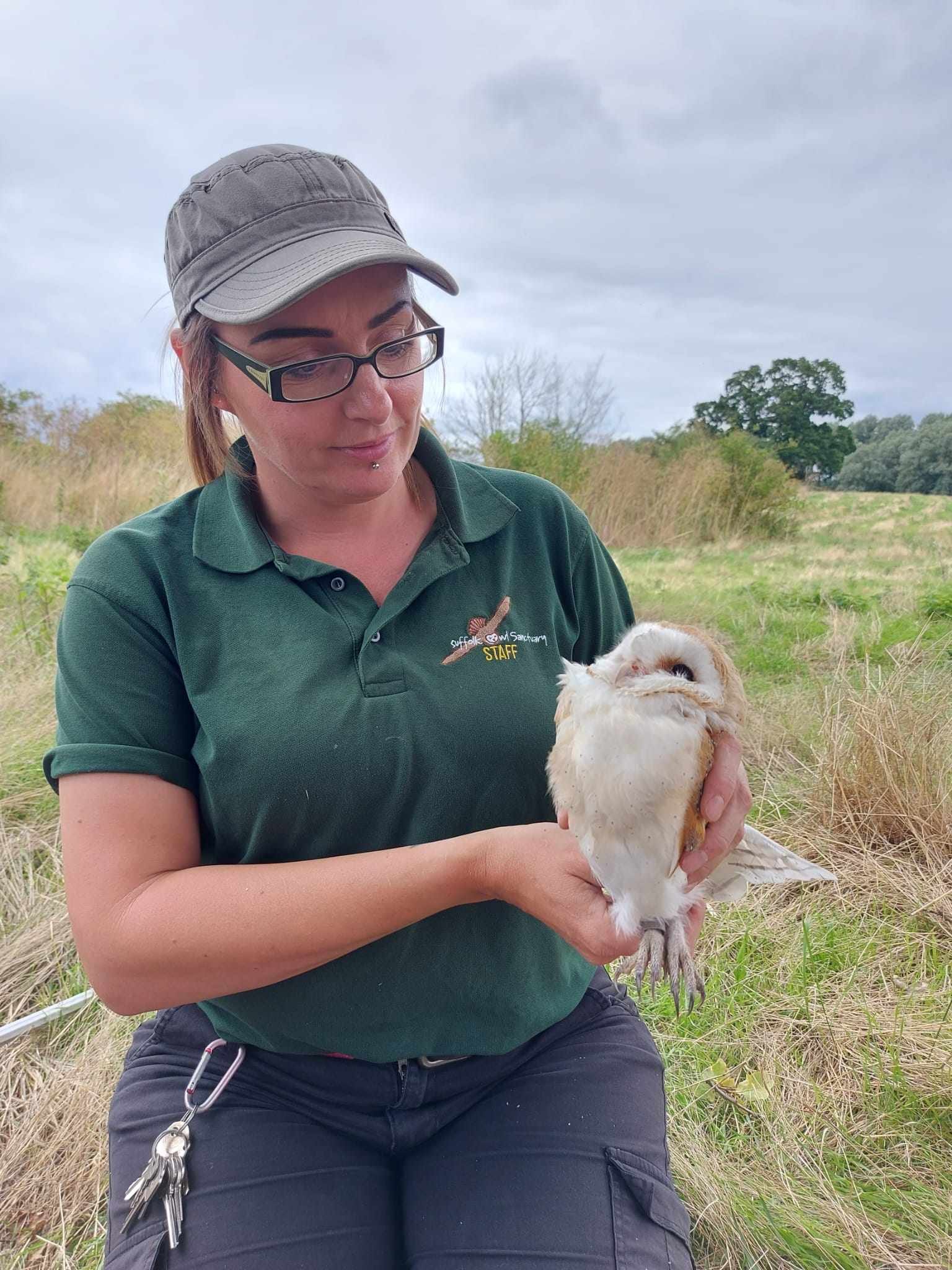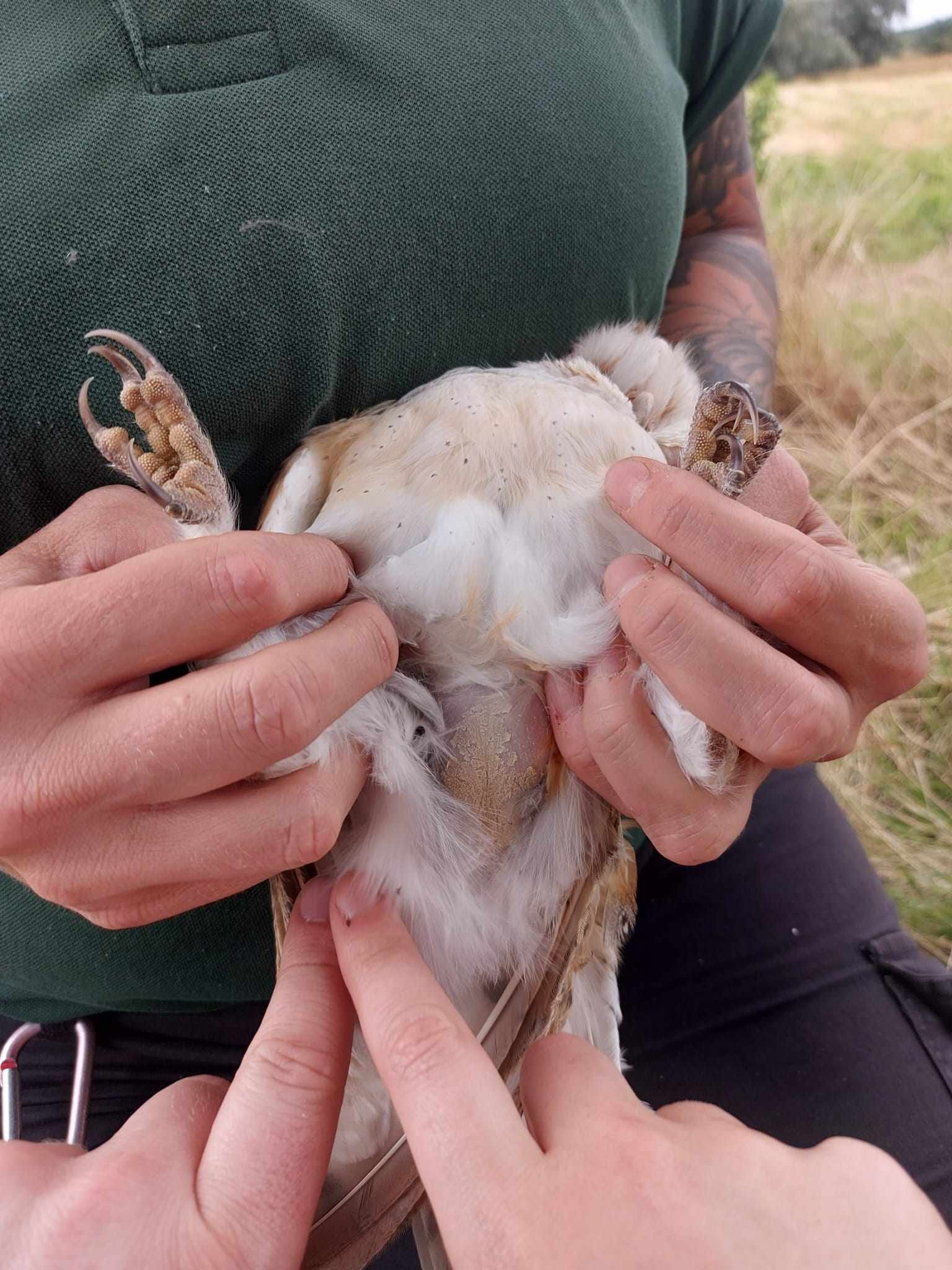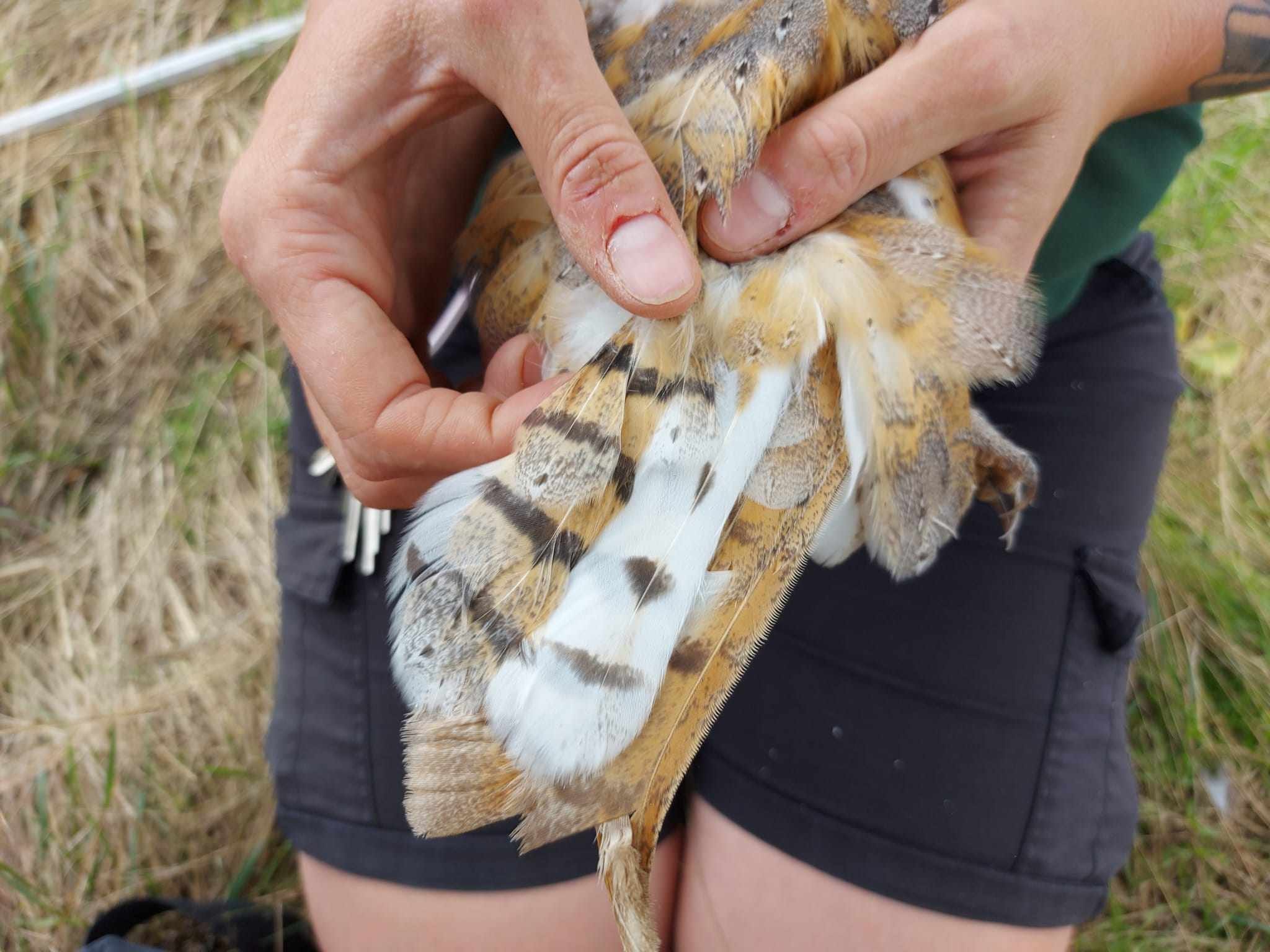It’s the time of year when we get a number of calls about Owls falling down or getting stuck in chimneys!
Sooty looking a bit sorry for himself upon arrival
Sooty was found having fallen down a chimney. The finder was able to get him in a box so that he could be brought to us for assessment. He was covered head to toe in black soot, which needed to be gently washed off to avoid causing any issues to his eyes, breathing or digestive systems.
Owls are not waterproof, so bath-time can be a little difficult
Manager Maz was prepared with an apron, but even this wasn’t enough to protect her from getting covered in blackened water as Sooty objected to being bathed. Owls are not waterproof, so it isn’t natural for them to particularly enjoy getting wet, and Sooty definitely didn’t approve!
The Owl doth protest!
Over the course of 24 hours, Sooty received a couple of baths in warm water and mild soap to get rid of as much soot as possible. Each time we allow the Owl to dry off fully to reassess the need for another bath. Once he was mostly Tawny Owl coloured again, he was moved to one of our outdoor aviaries so that we could assess if there were any further complications. Thankfully, he was absolutely fine.
Looking a bit more like a Tawny Owl now.
A tiny amount of soot still on his toes, but this will come off after a couple of days.
The home-owners had installed a mesh cover over their chimney, following our advice, to prevent other wildlife from investigating as a potential roost site, so we arranged for him to be released in the garden where he was found. As soon as he was released, he flew into the trees and started calling, and immediately received a response from a female Tawny Owl, who we’ve all named “Sweep”.

